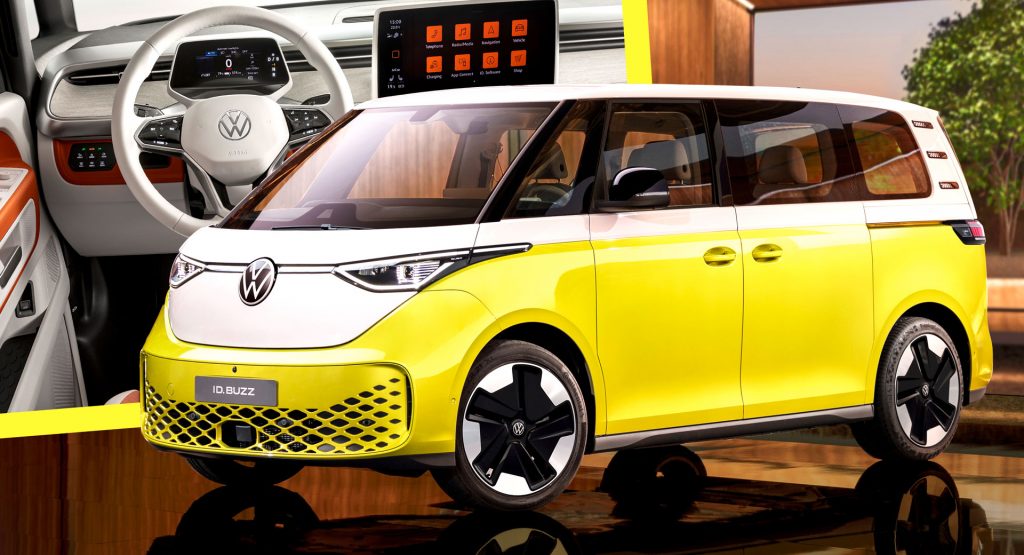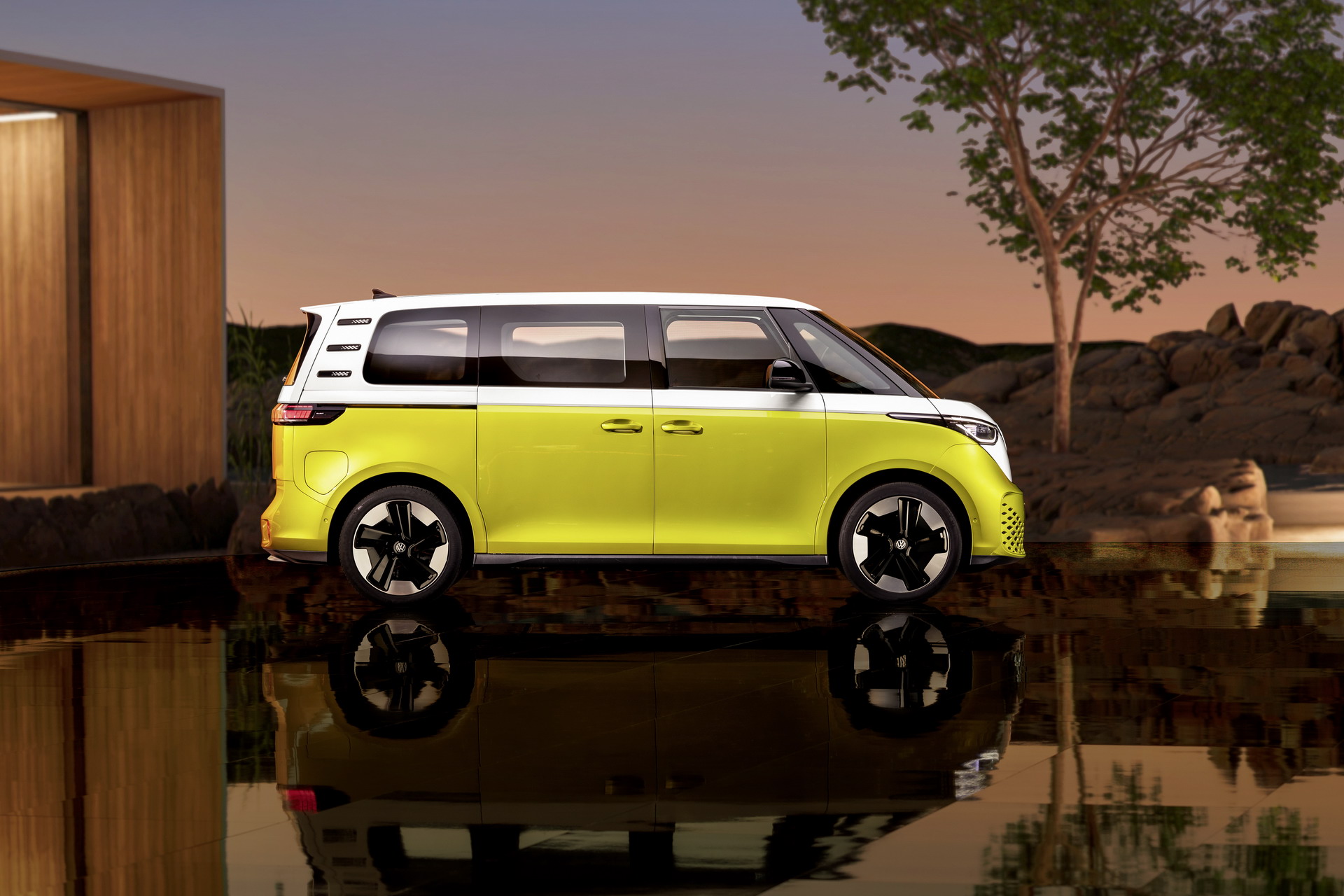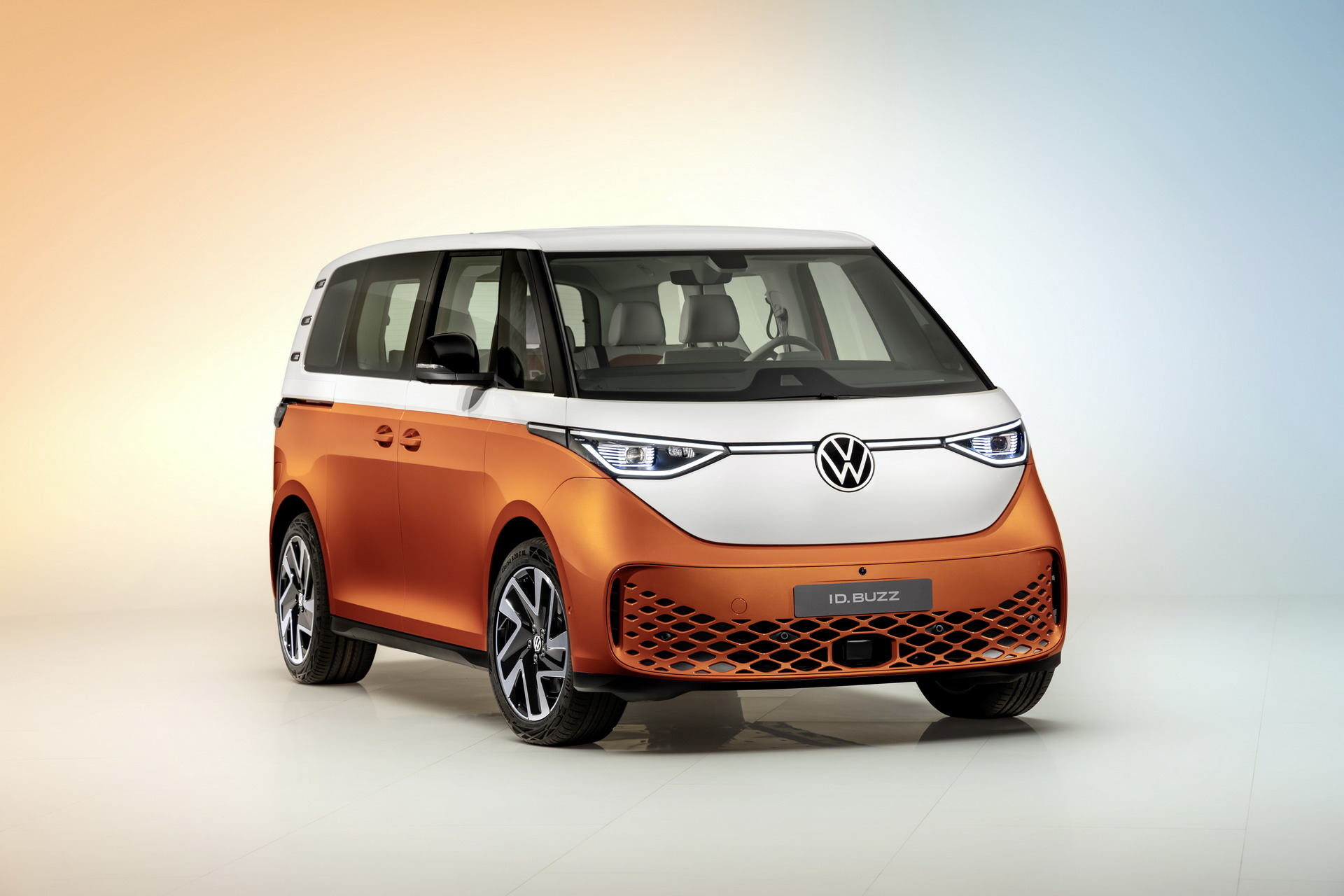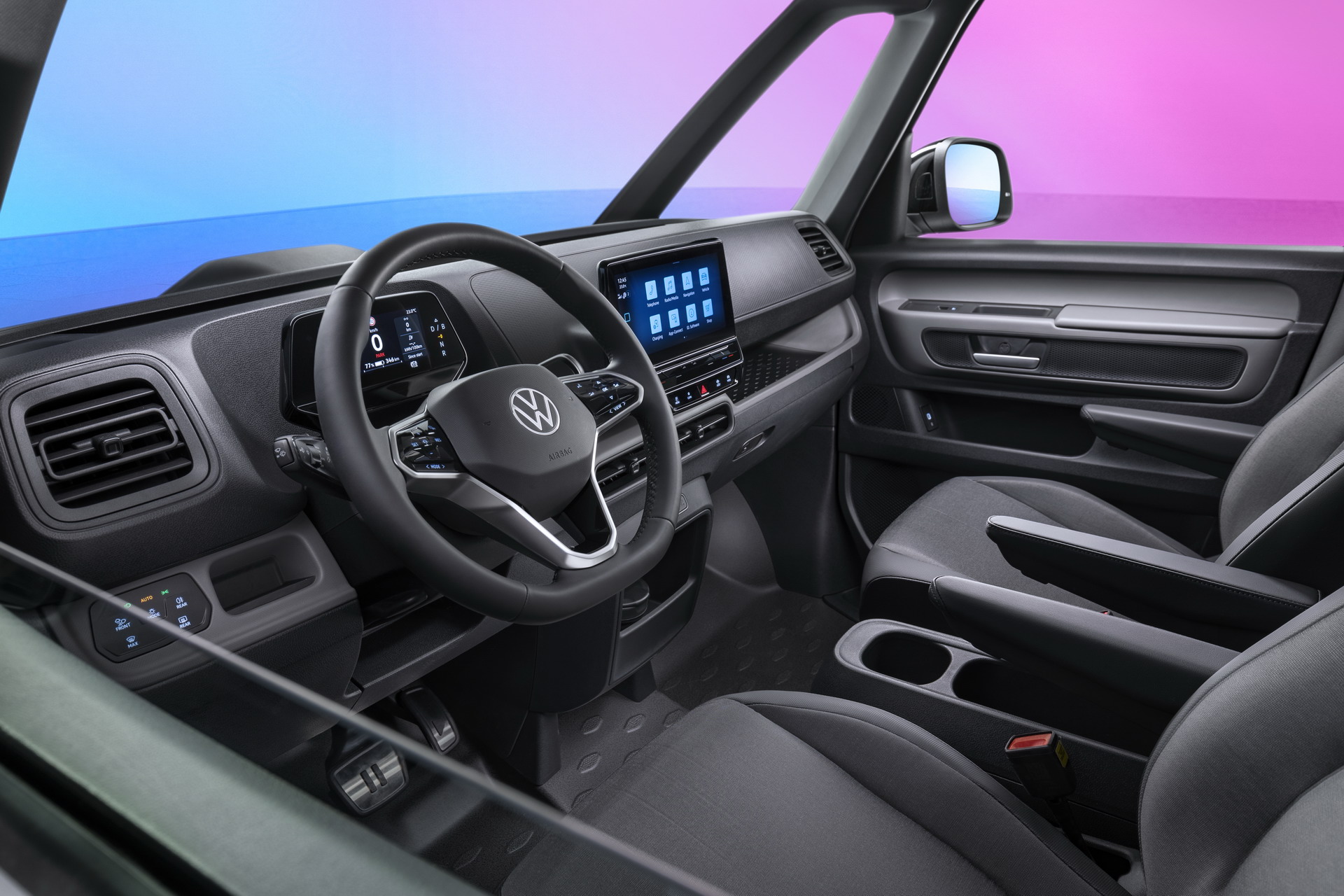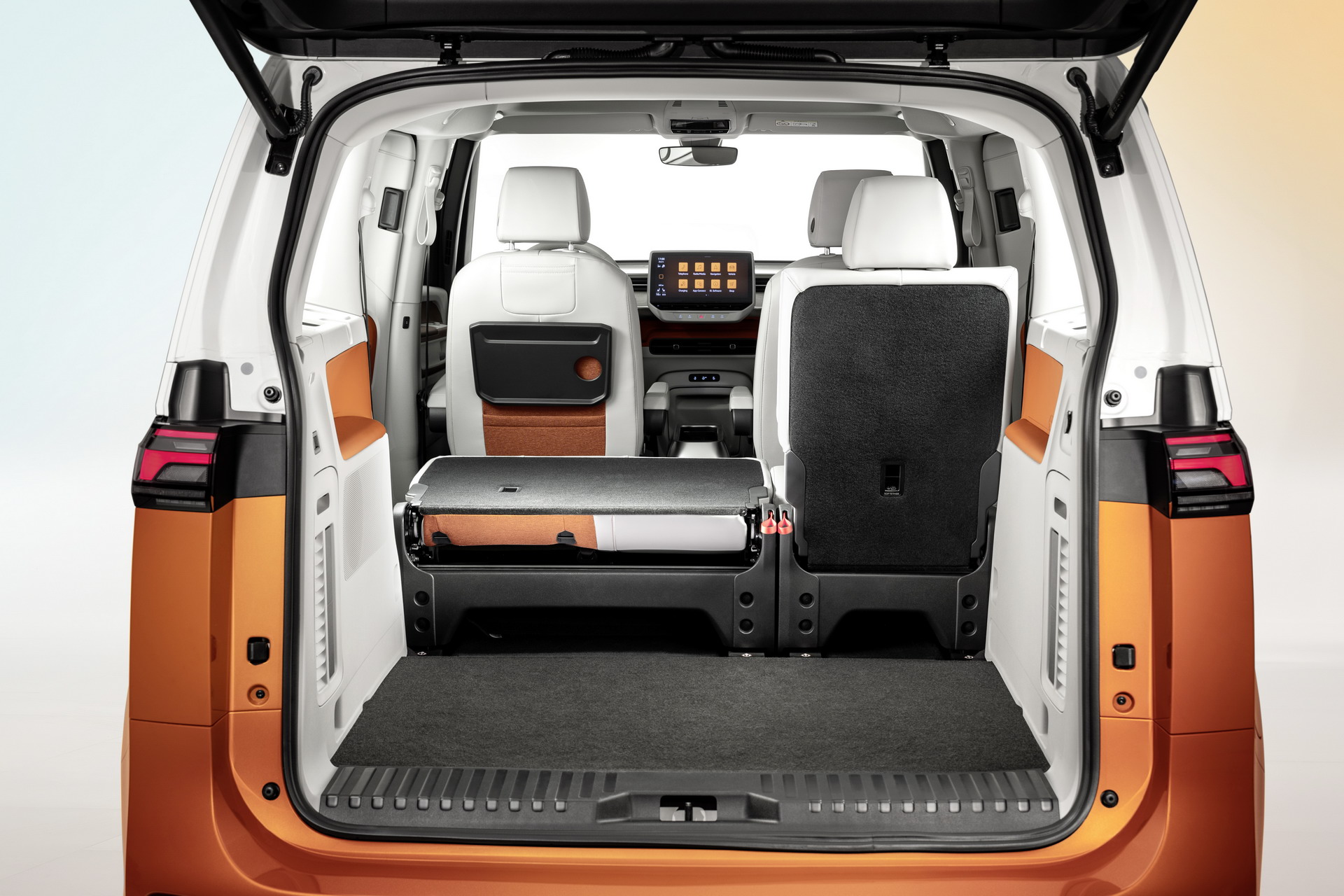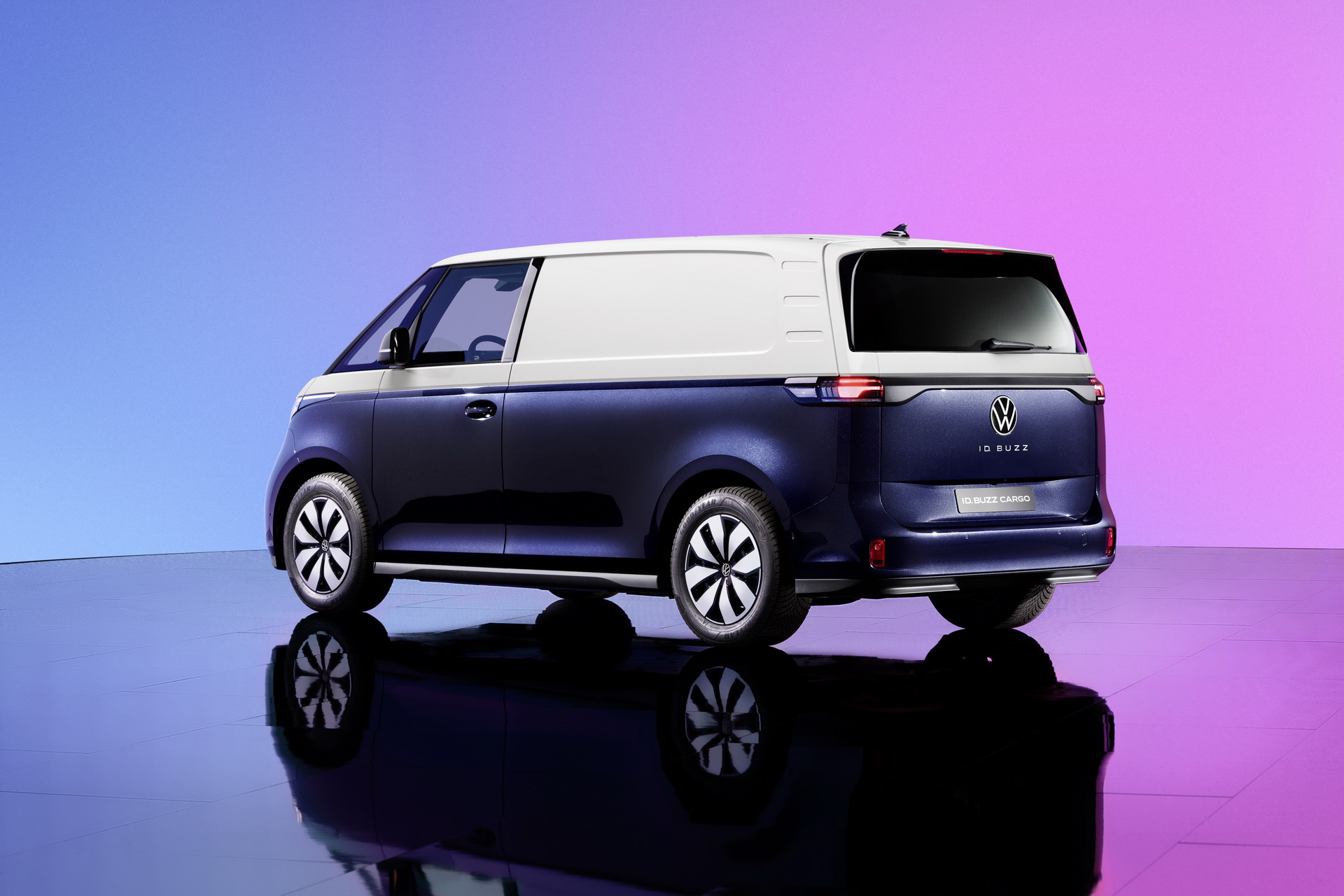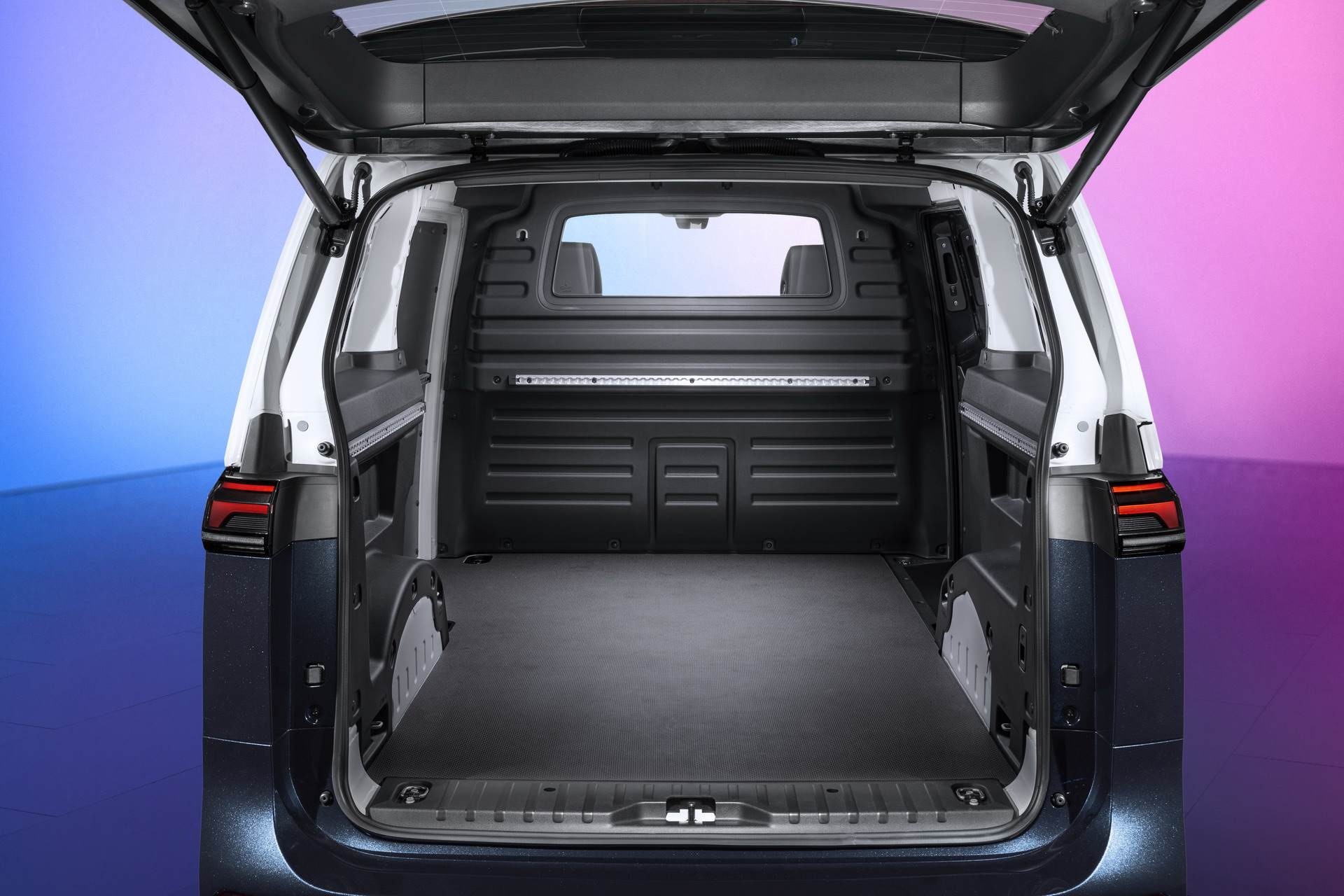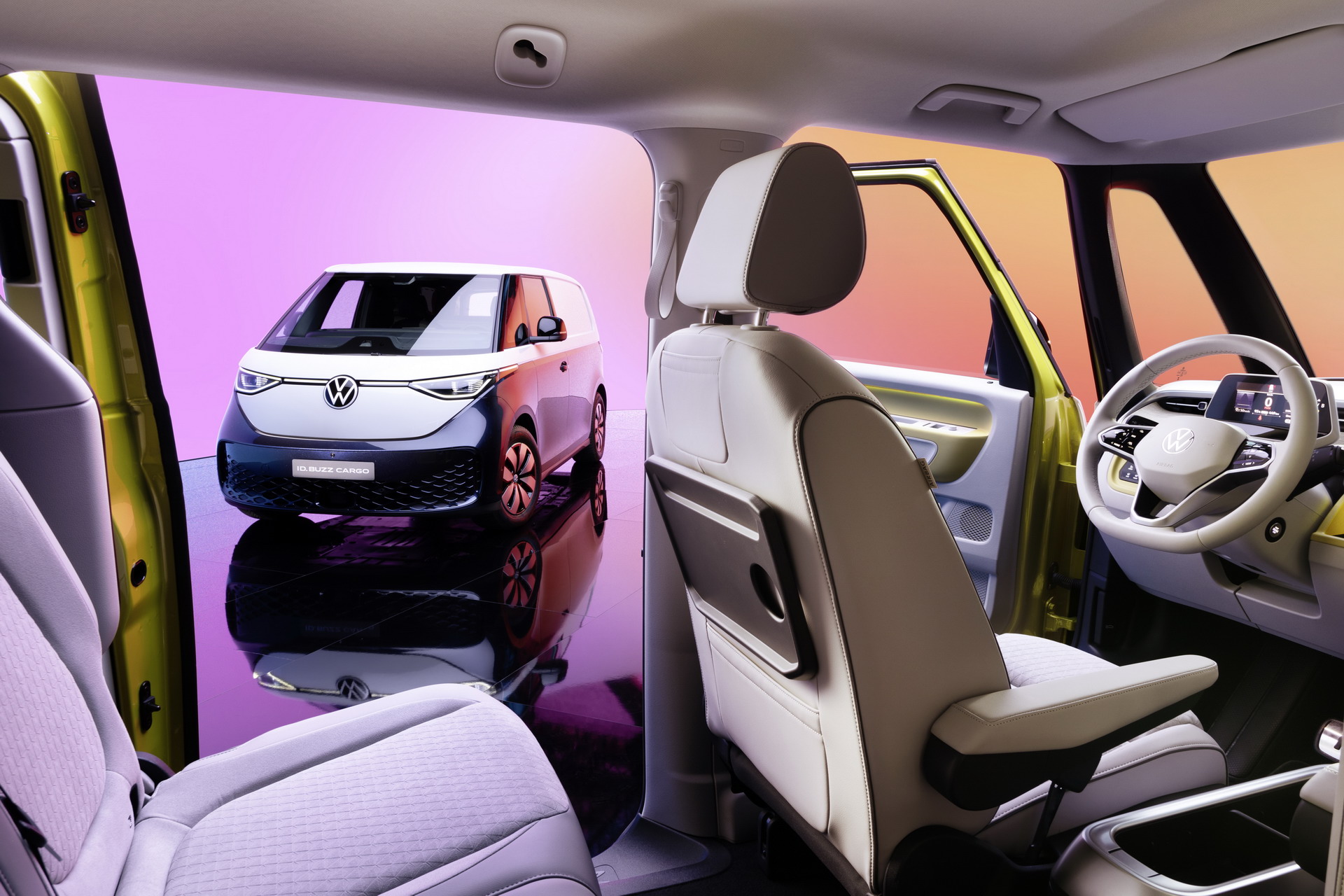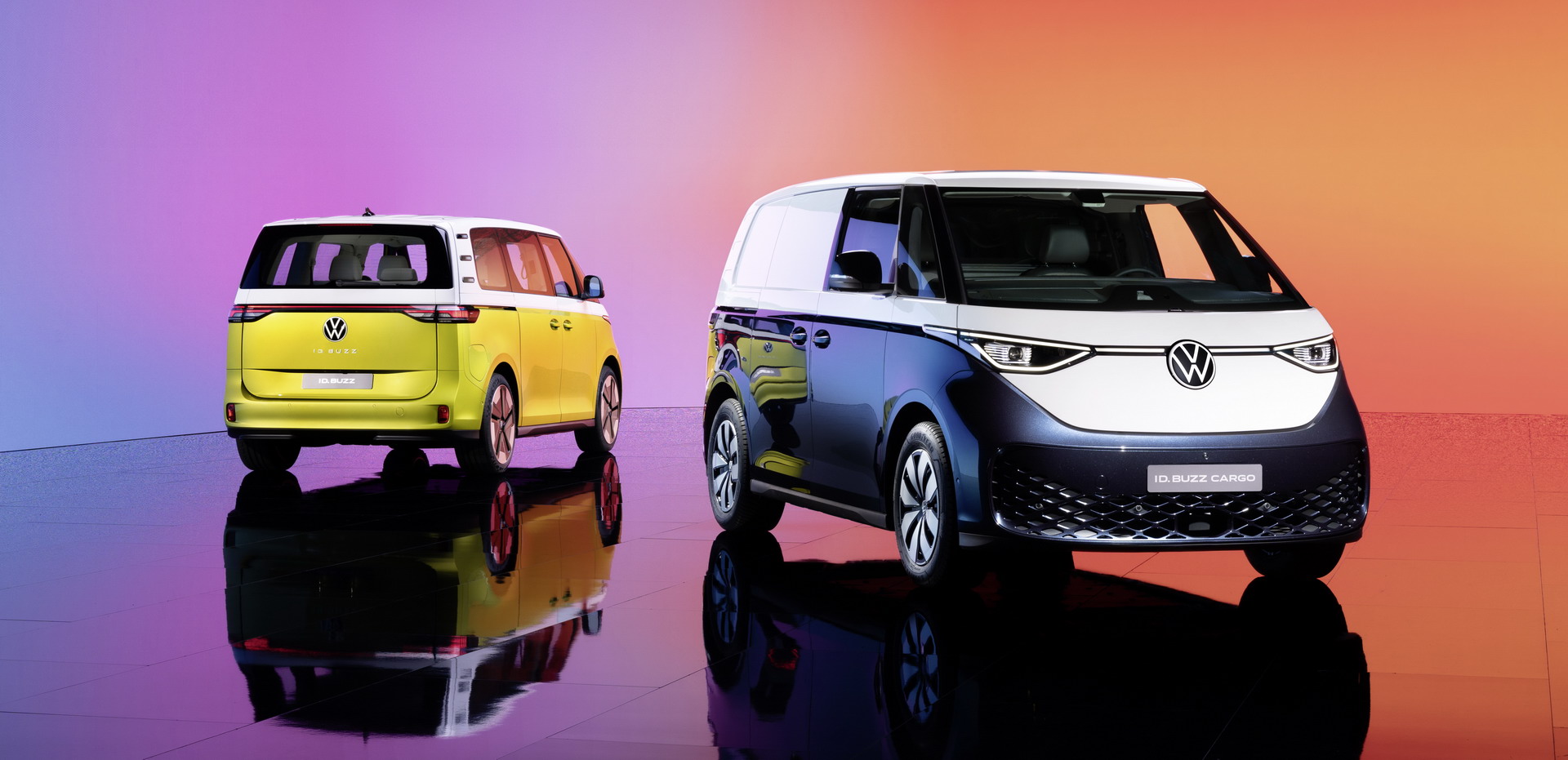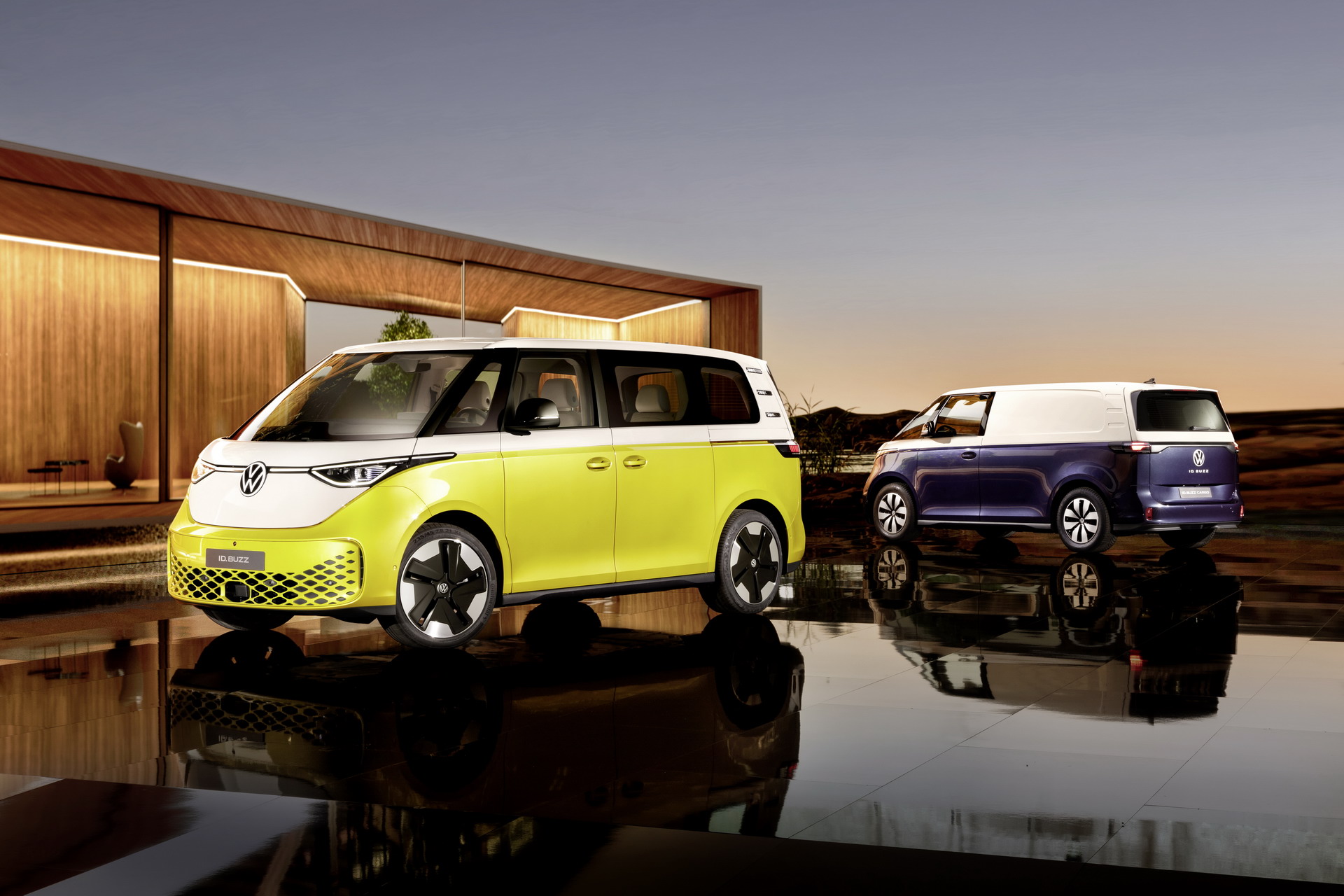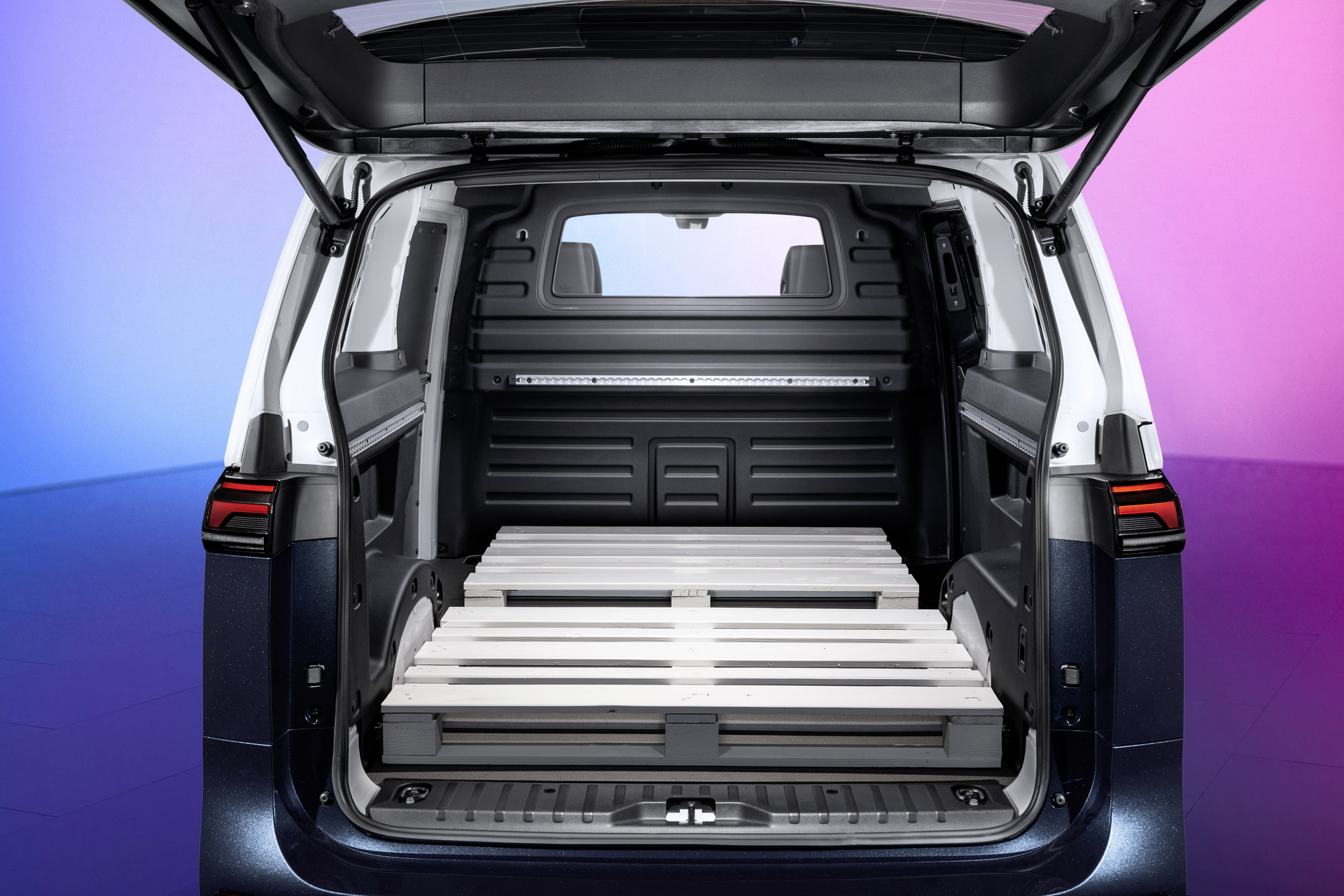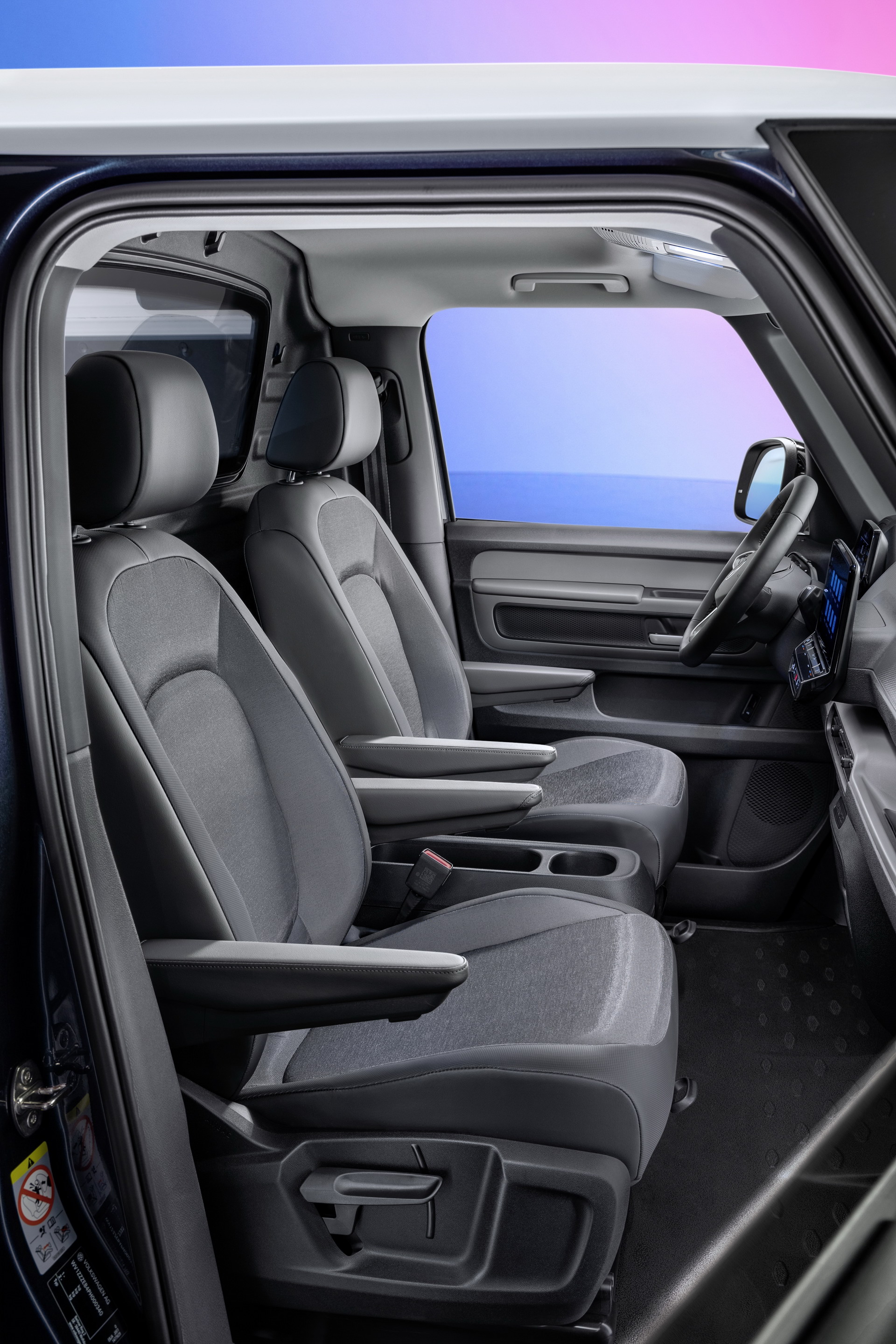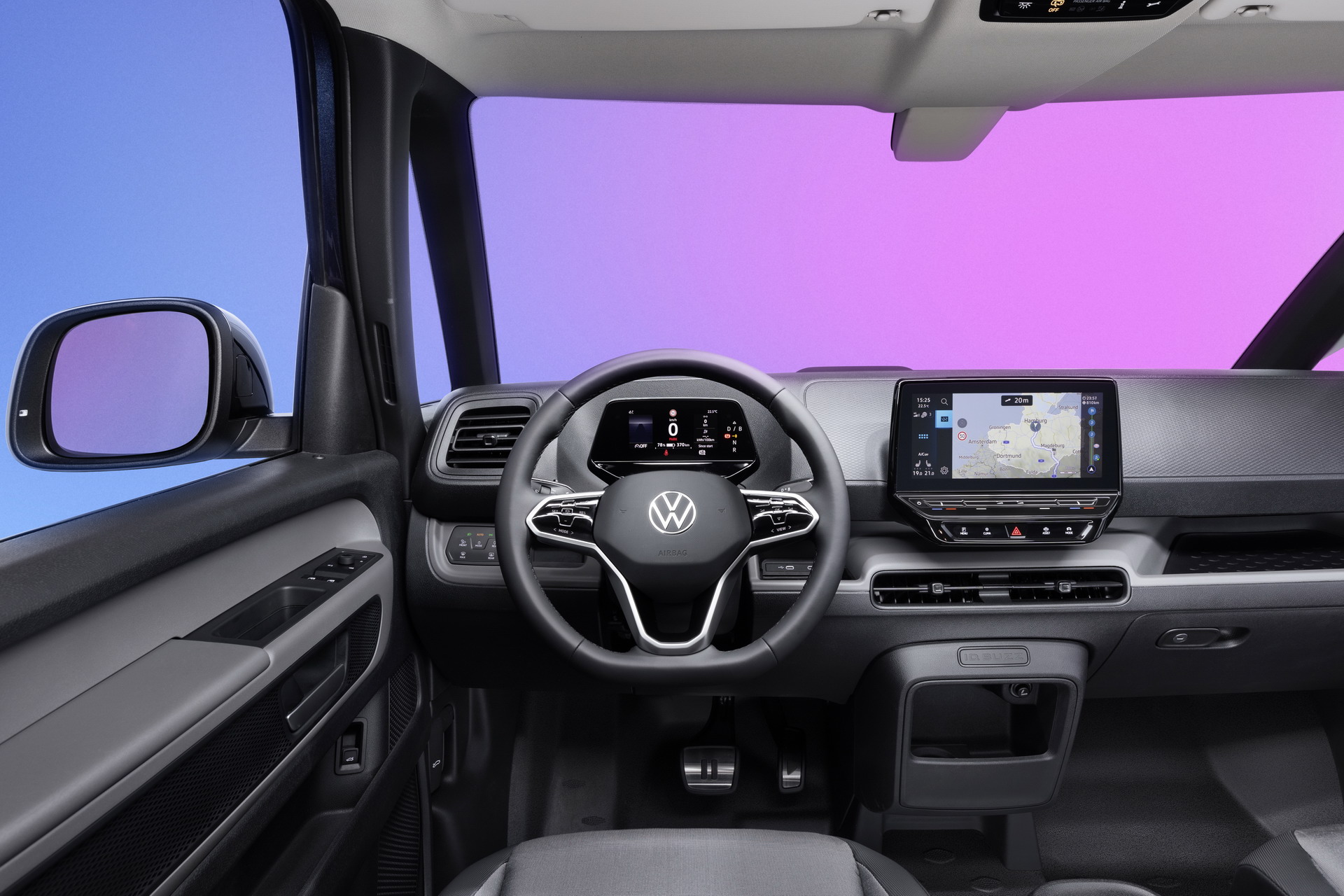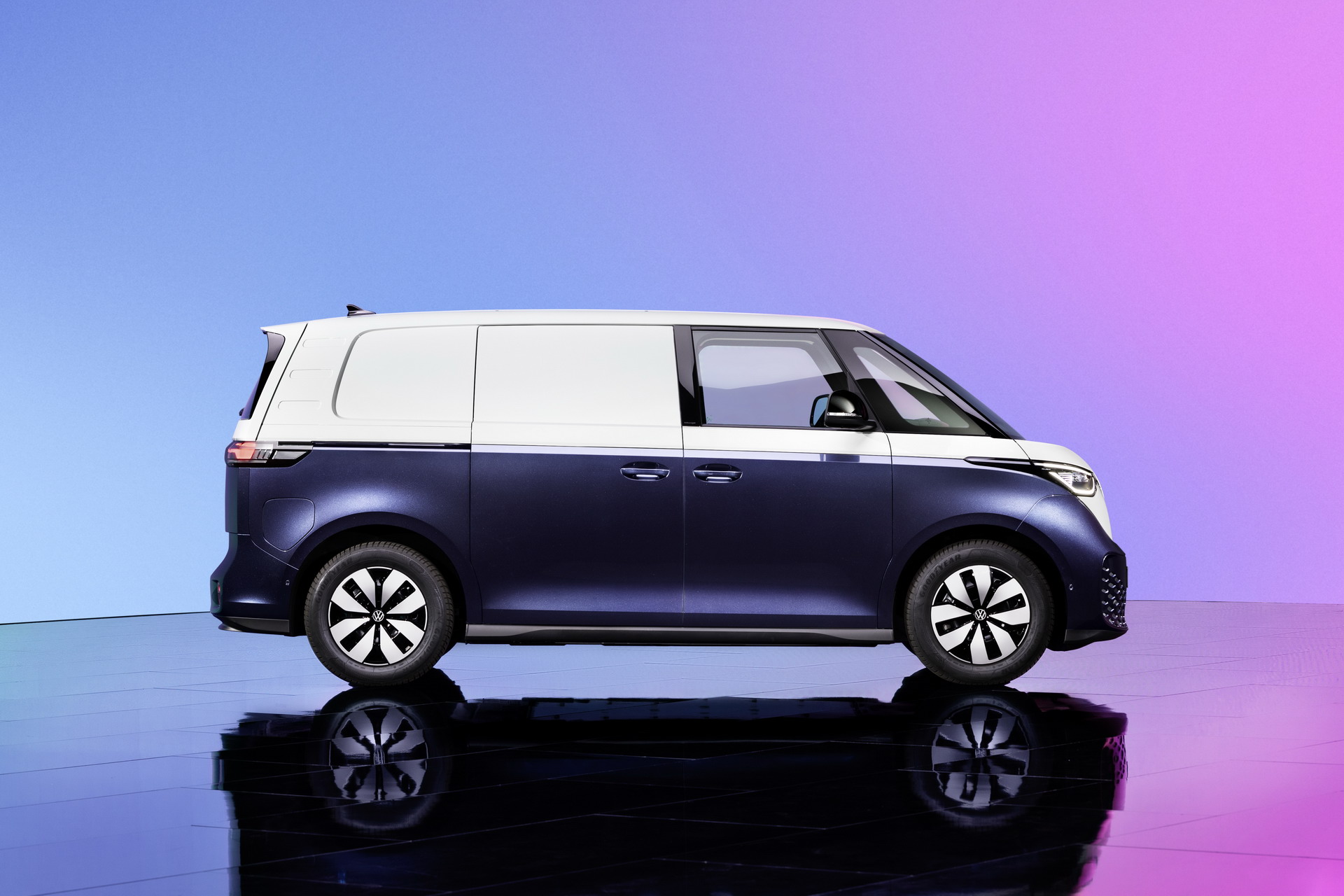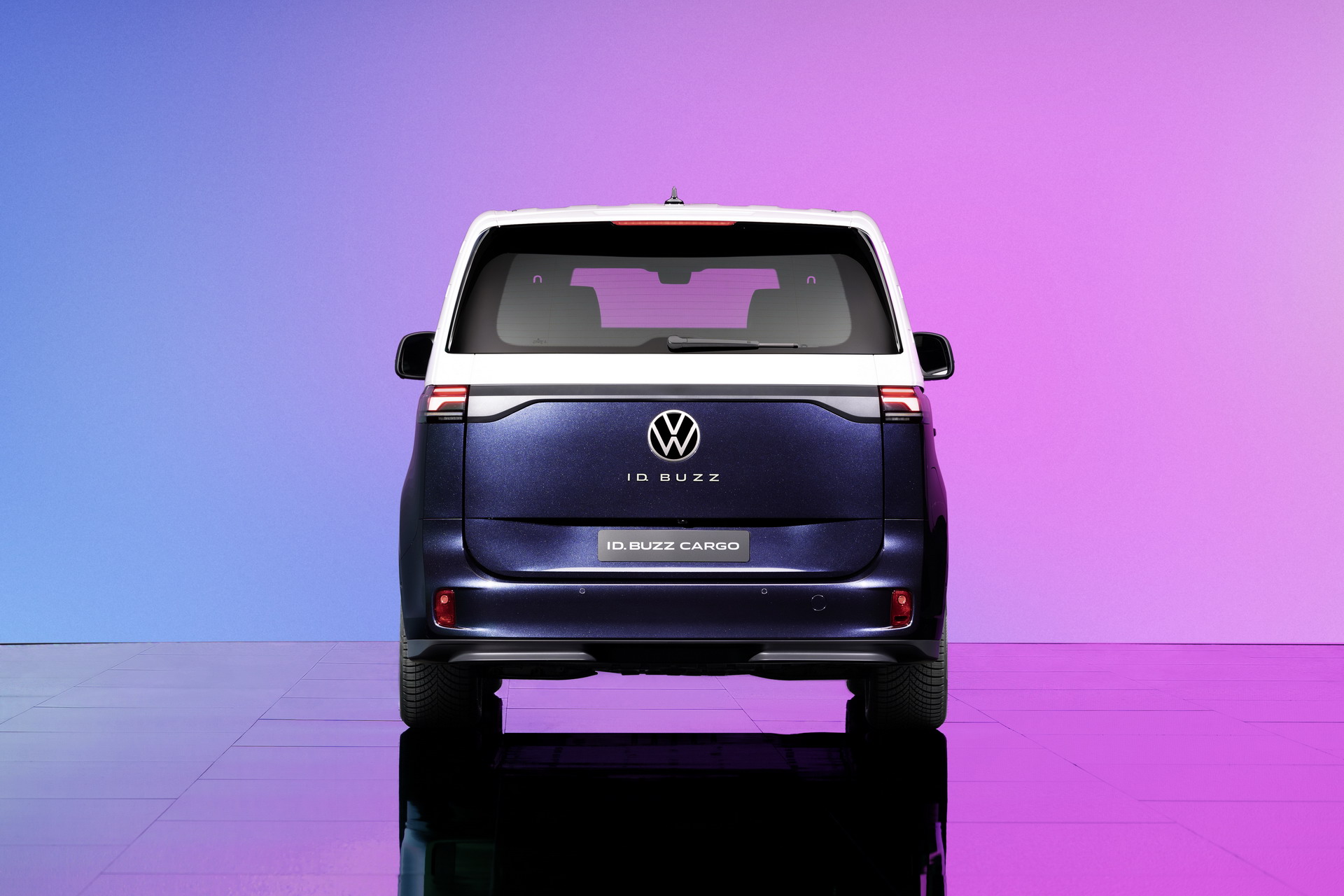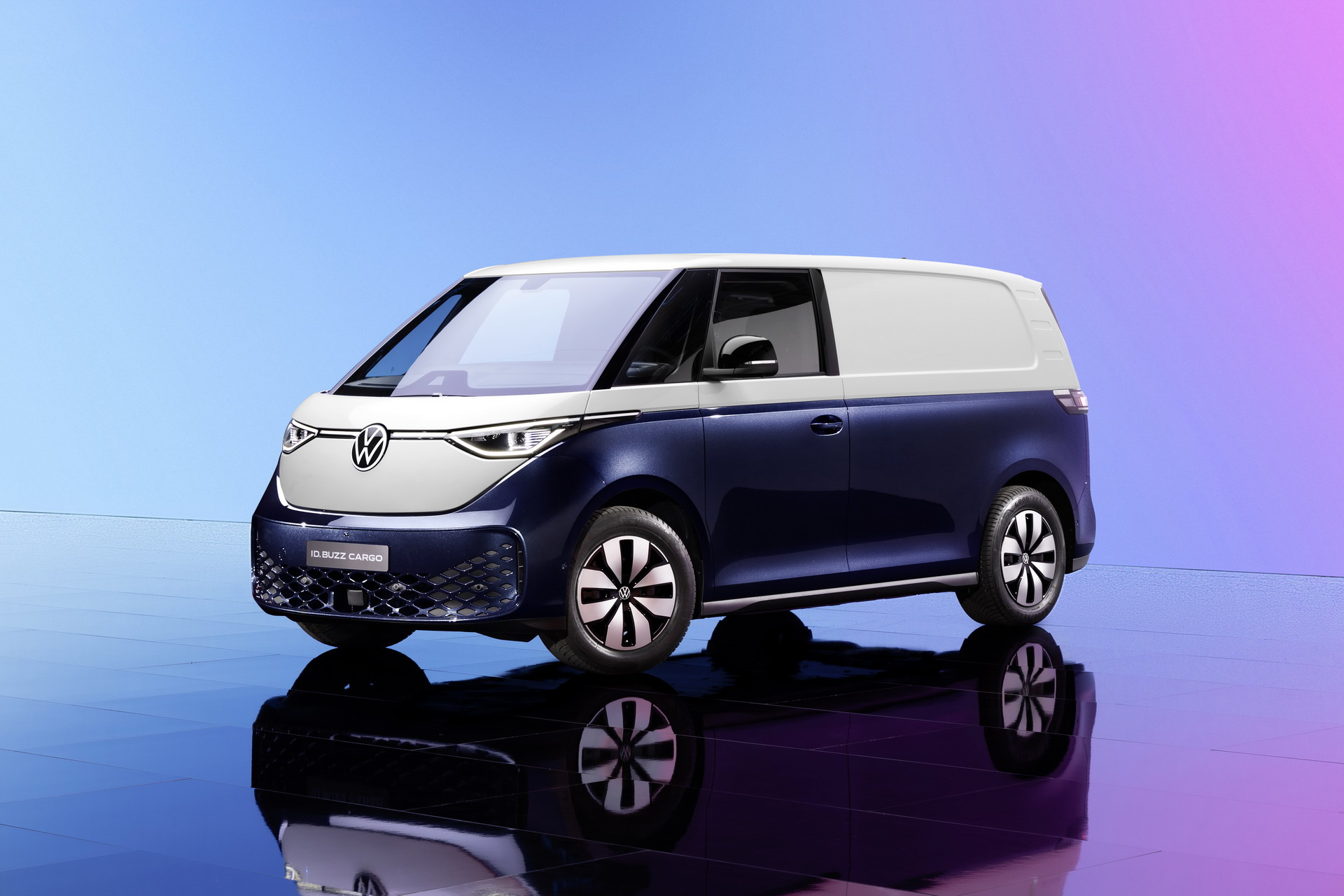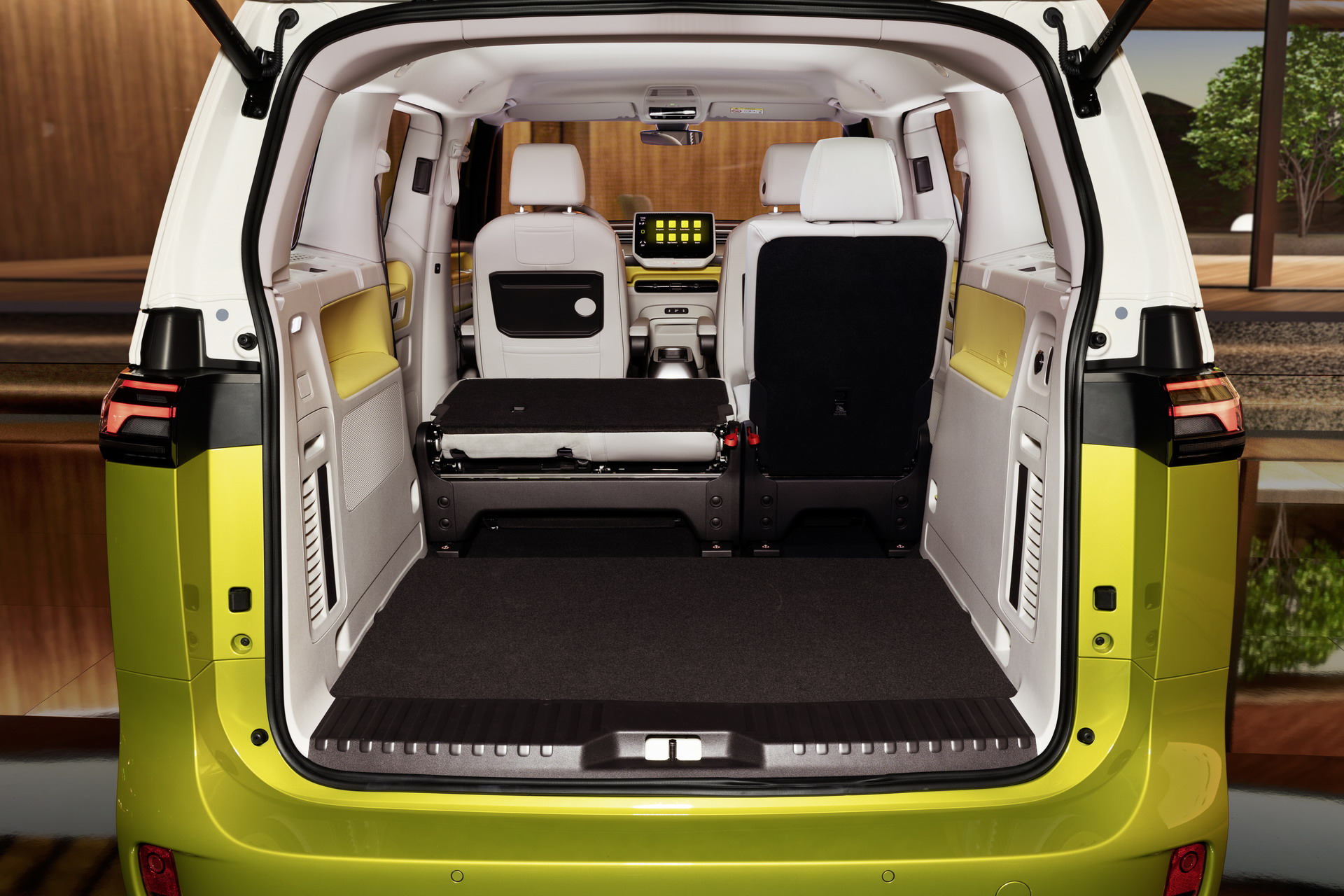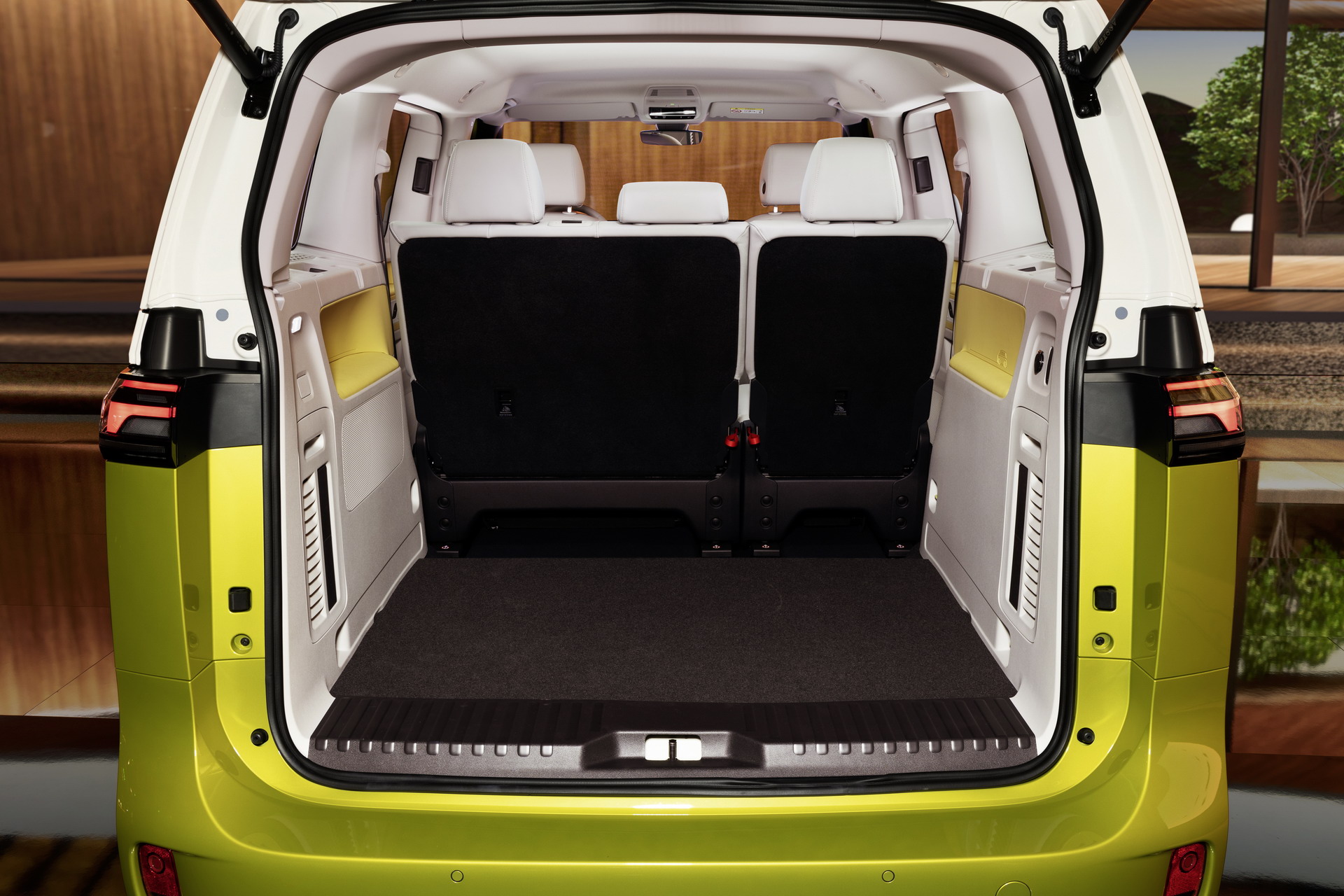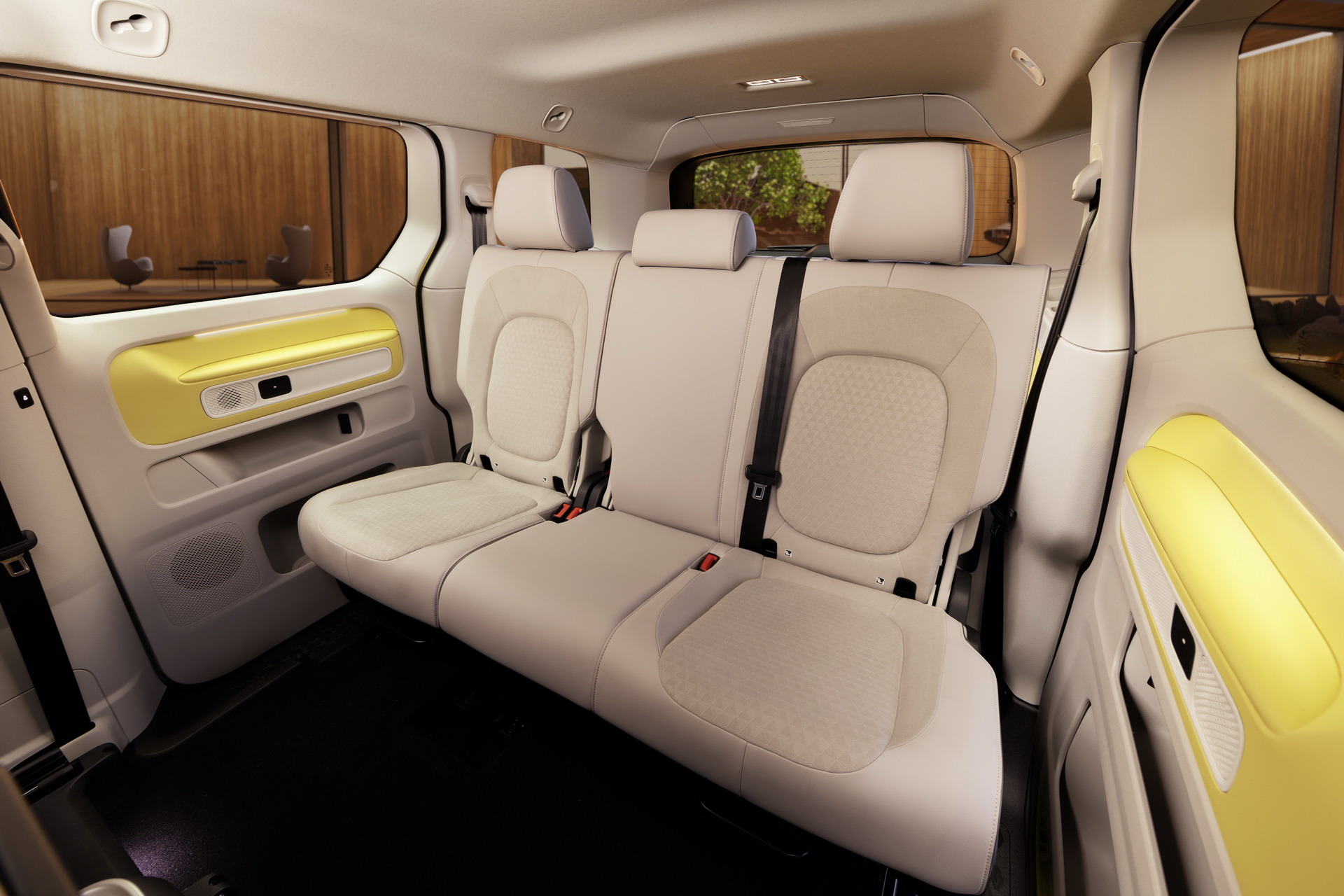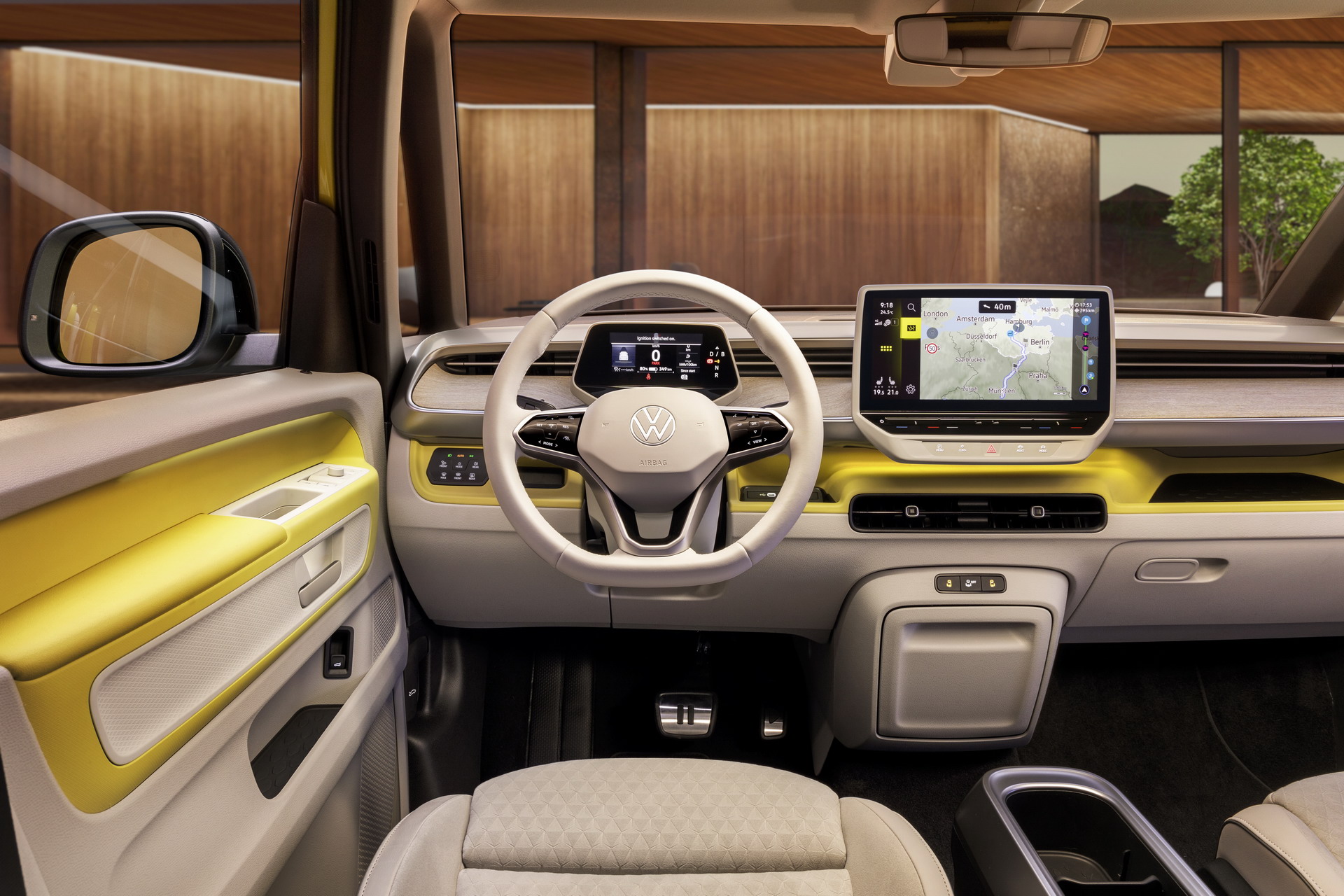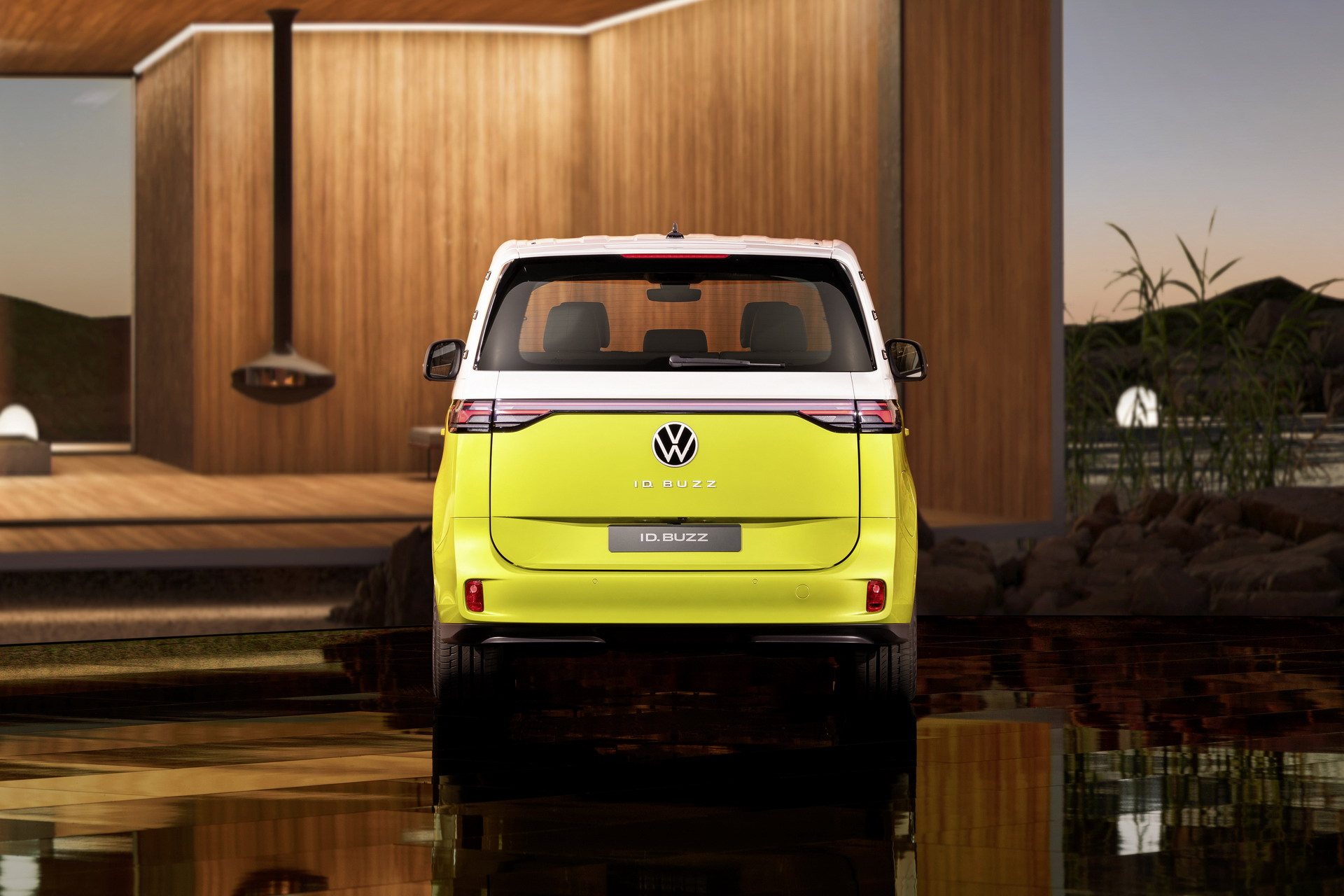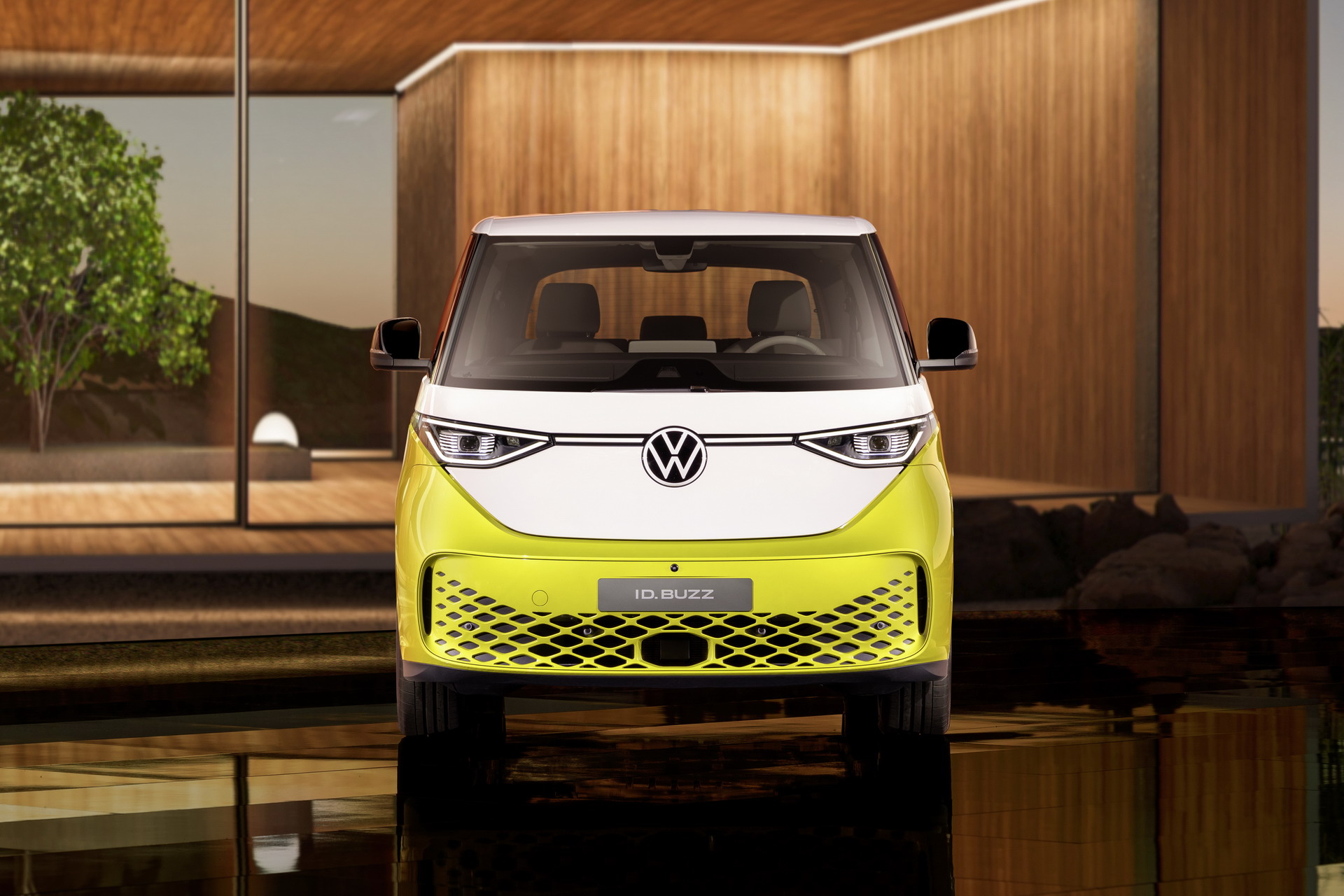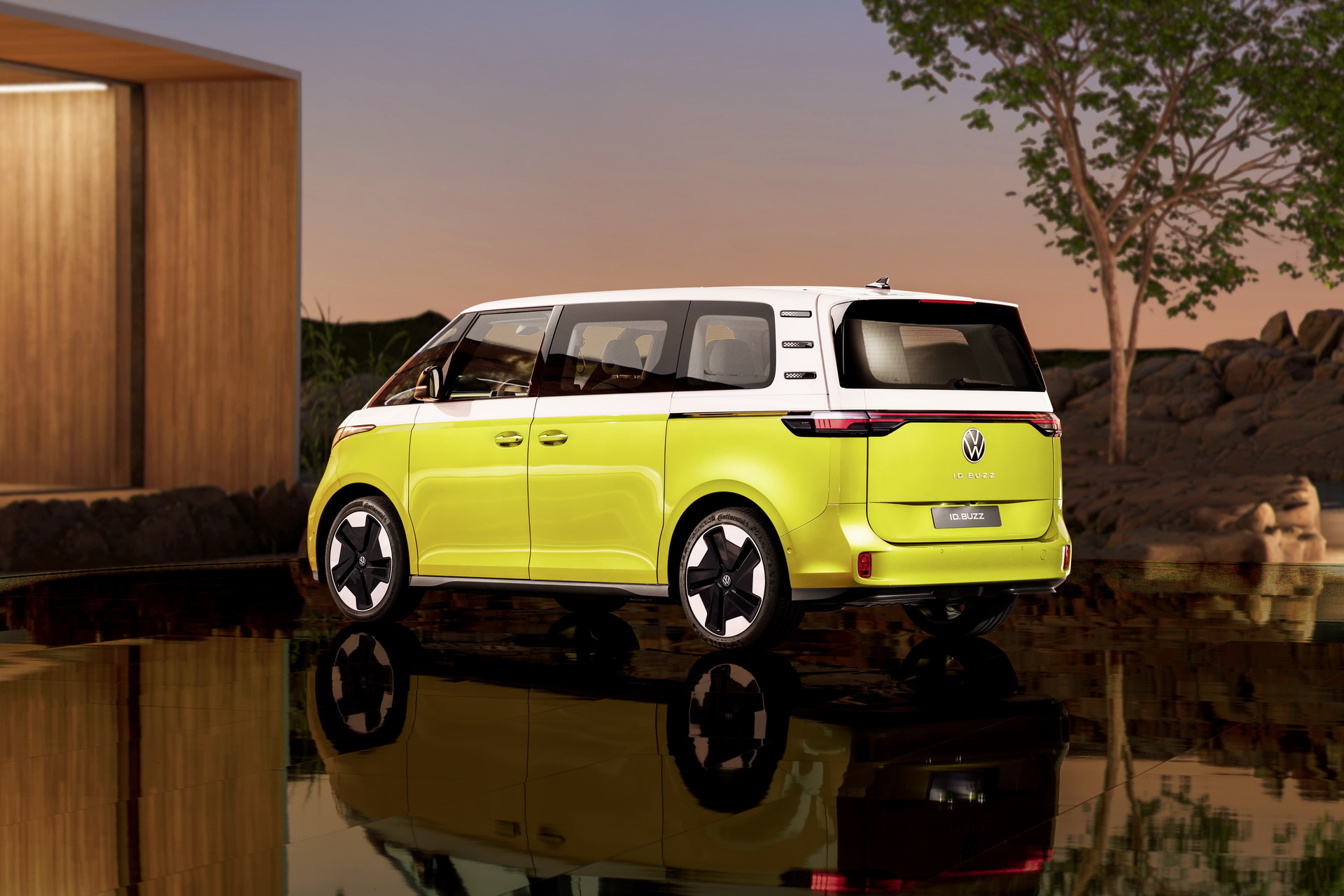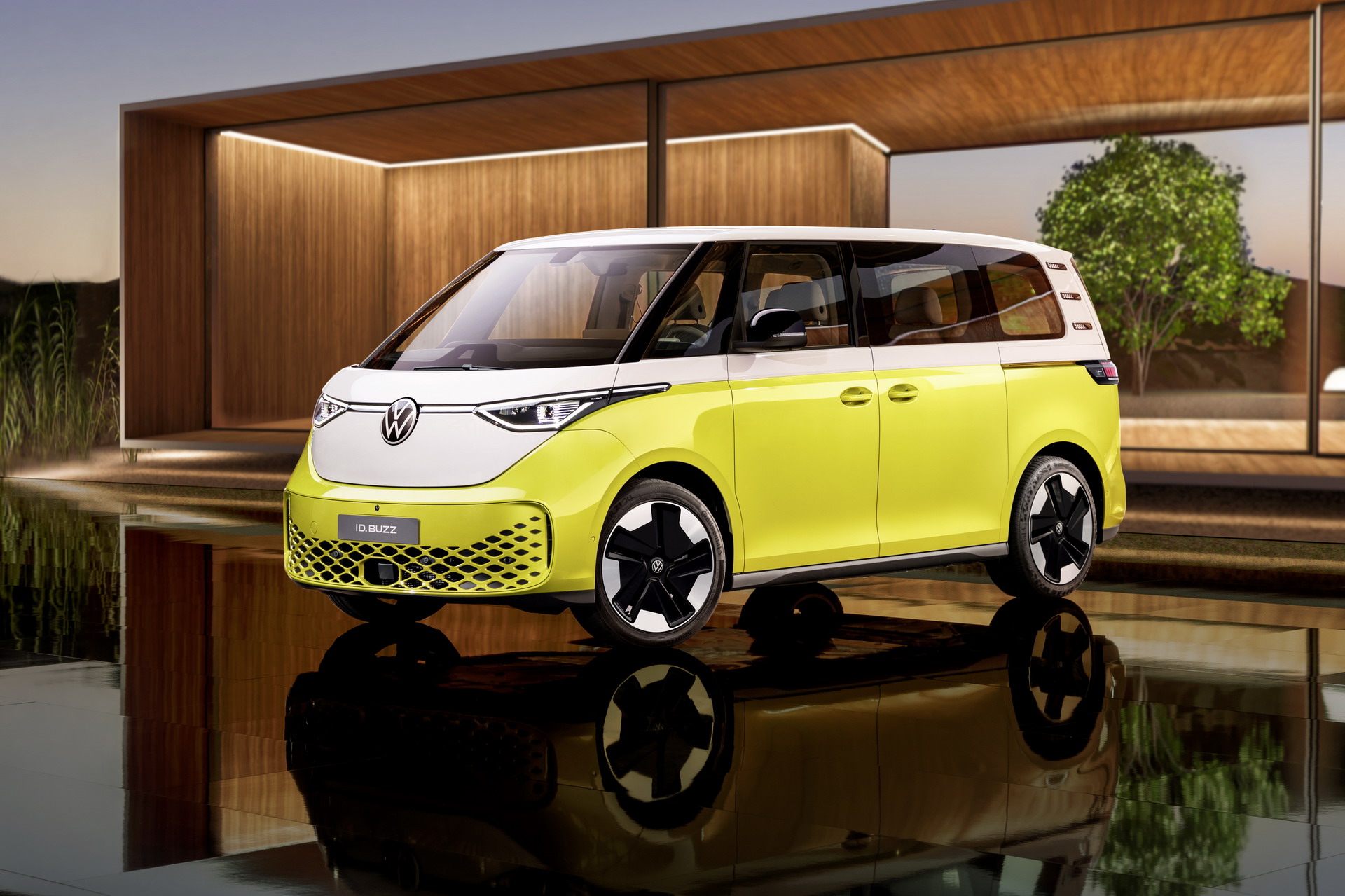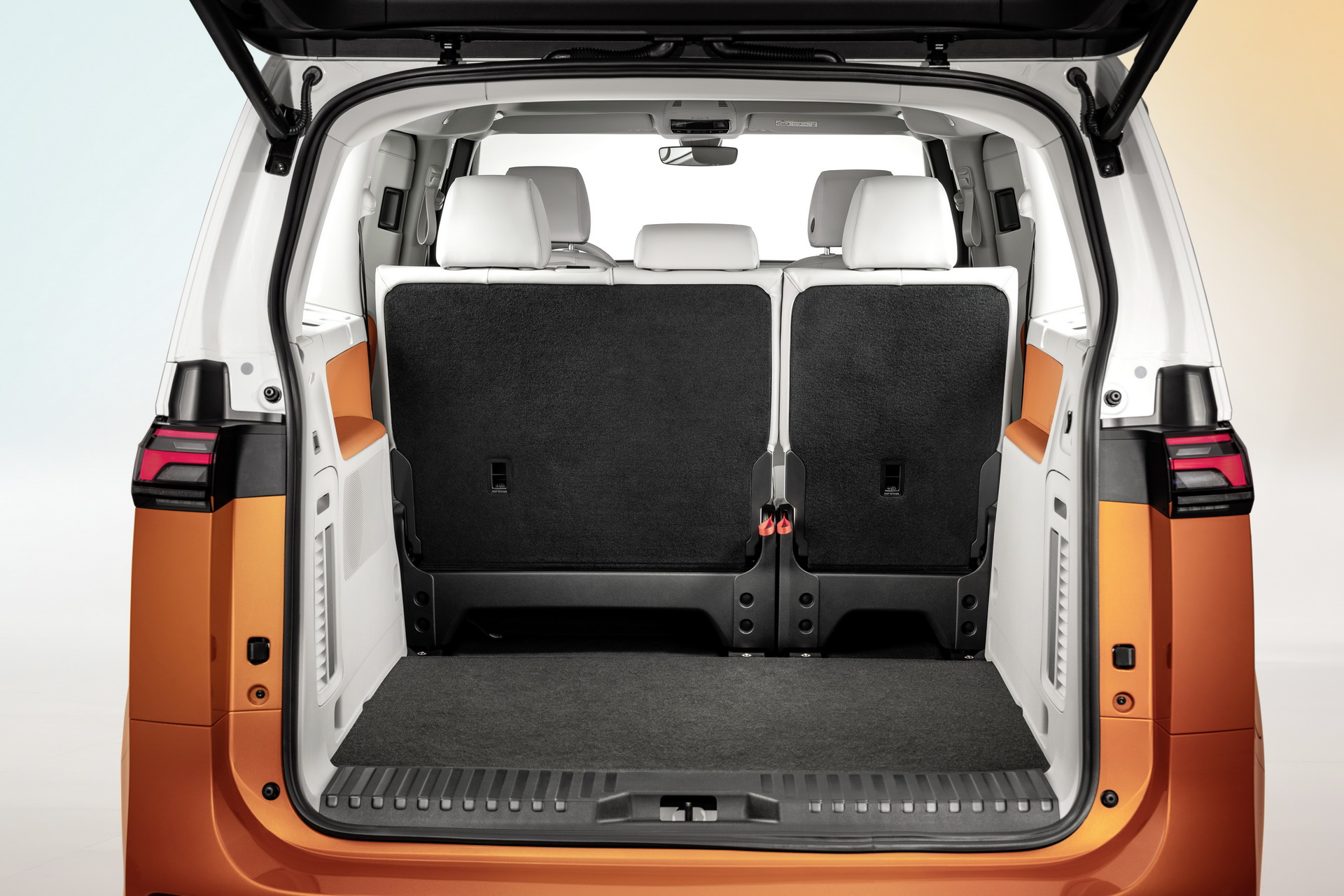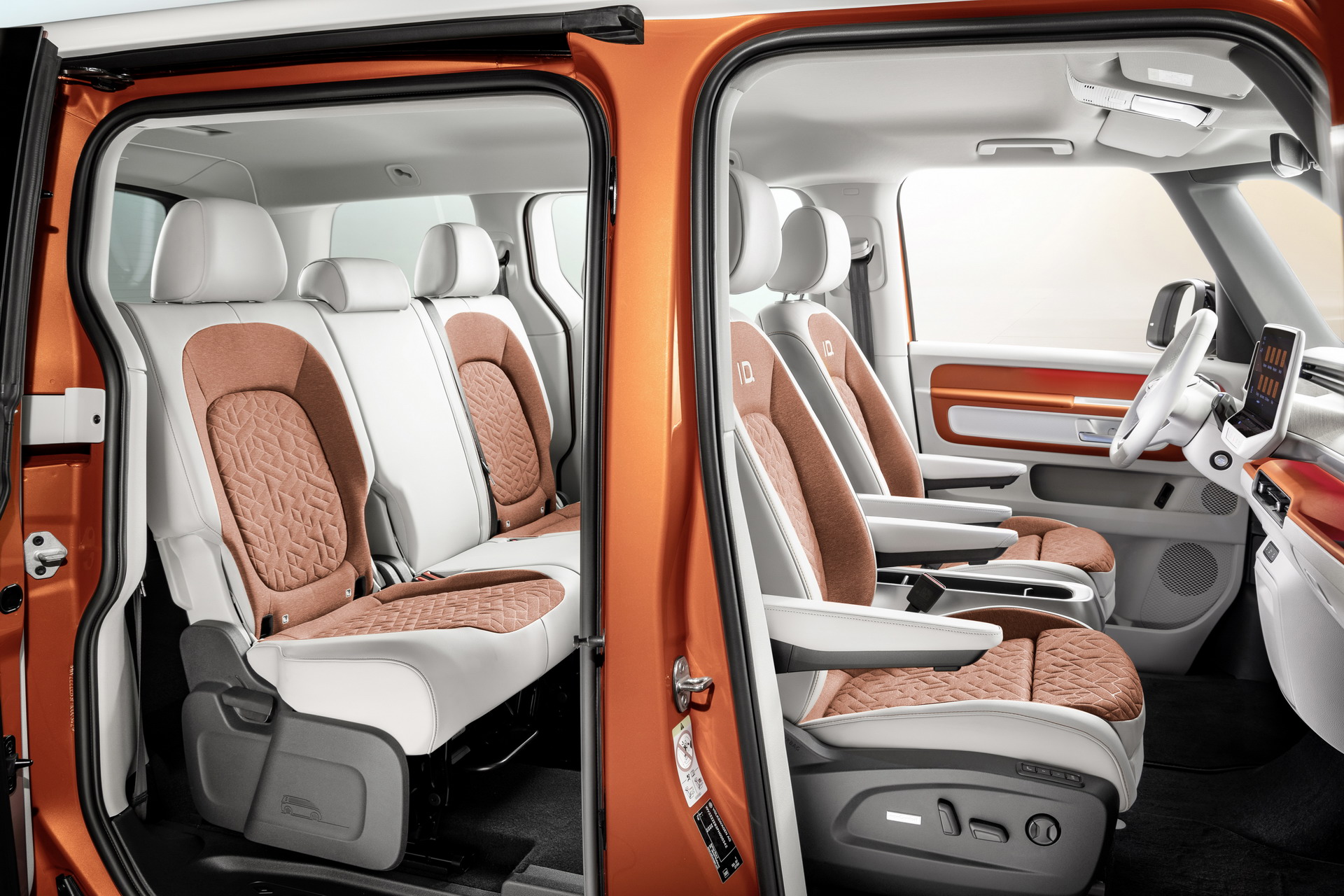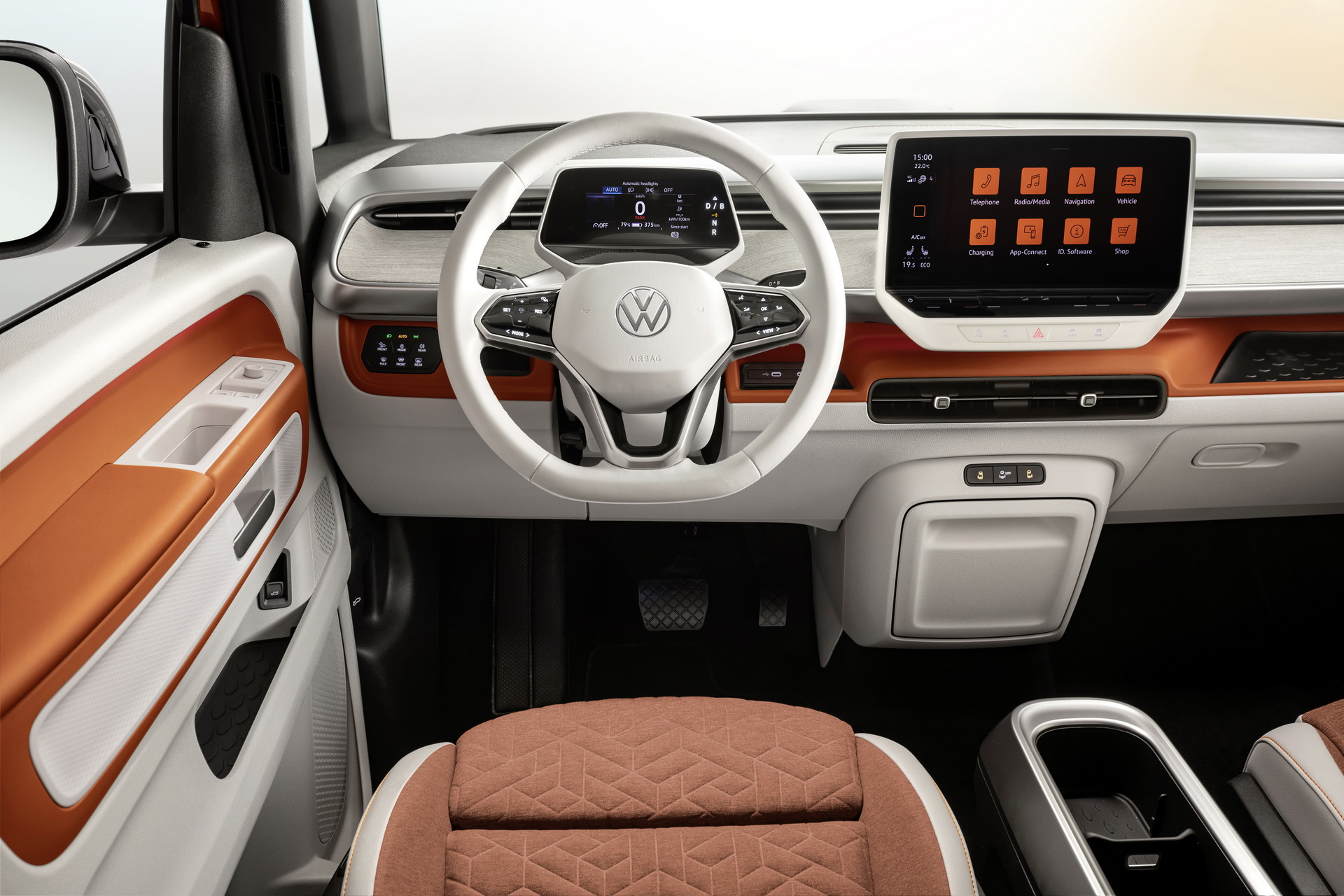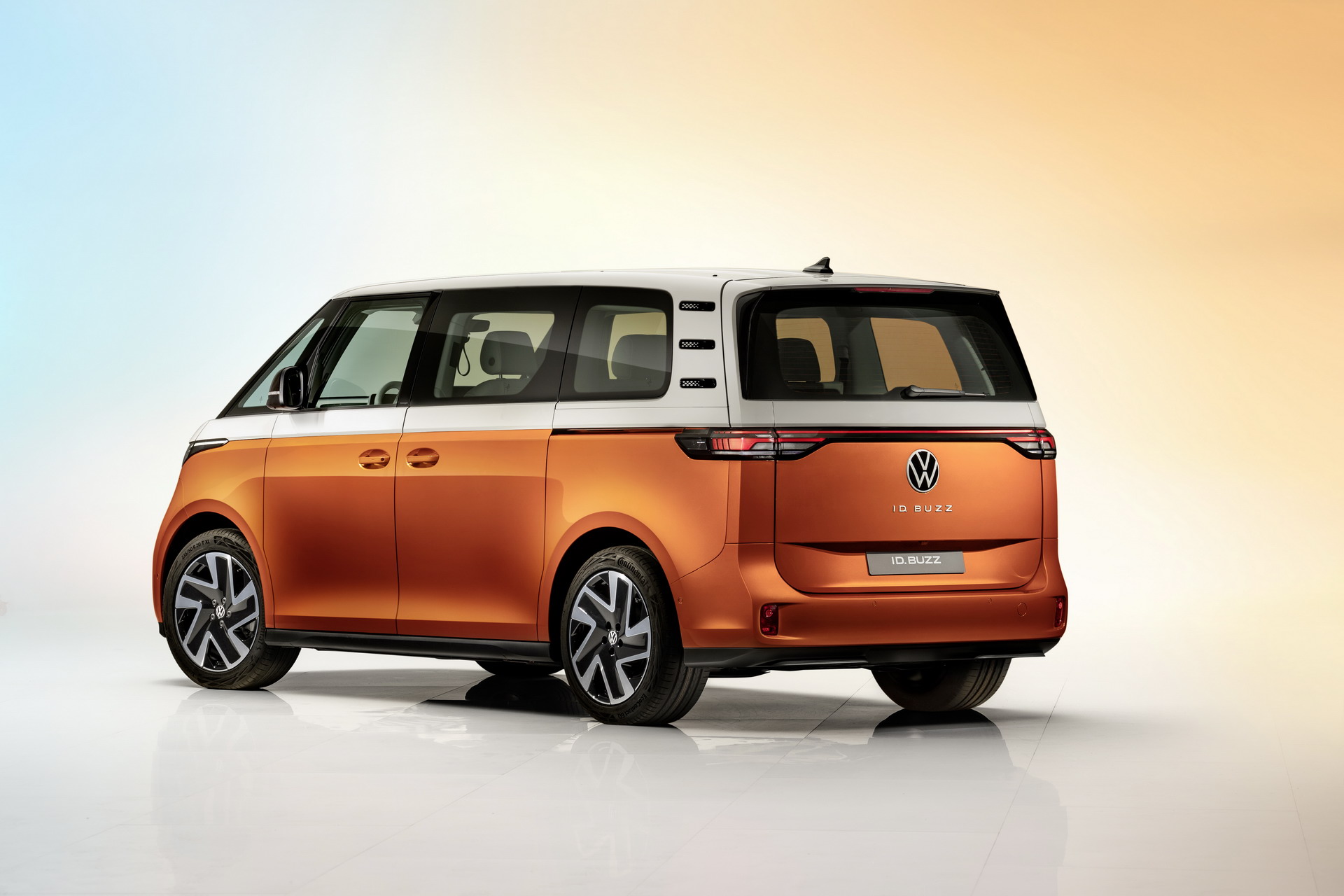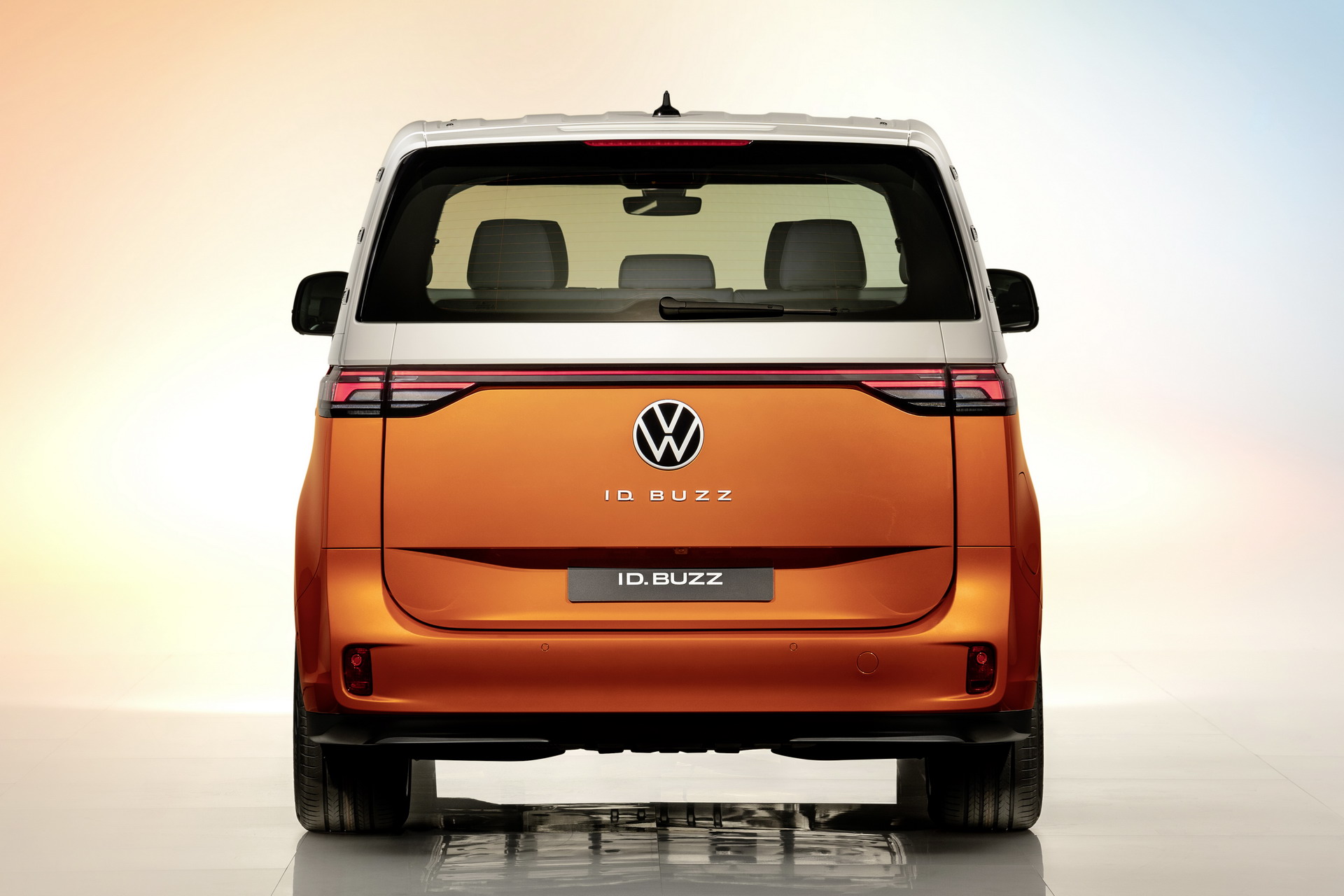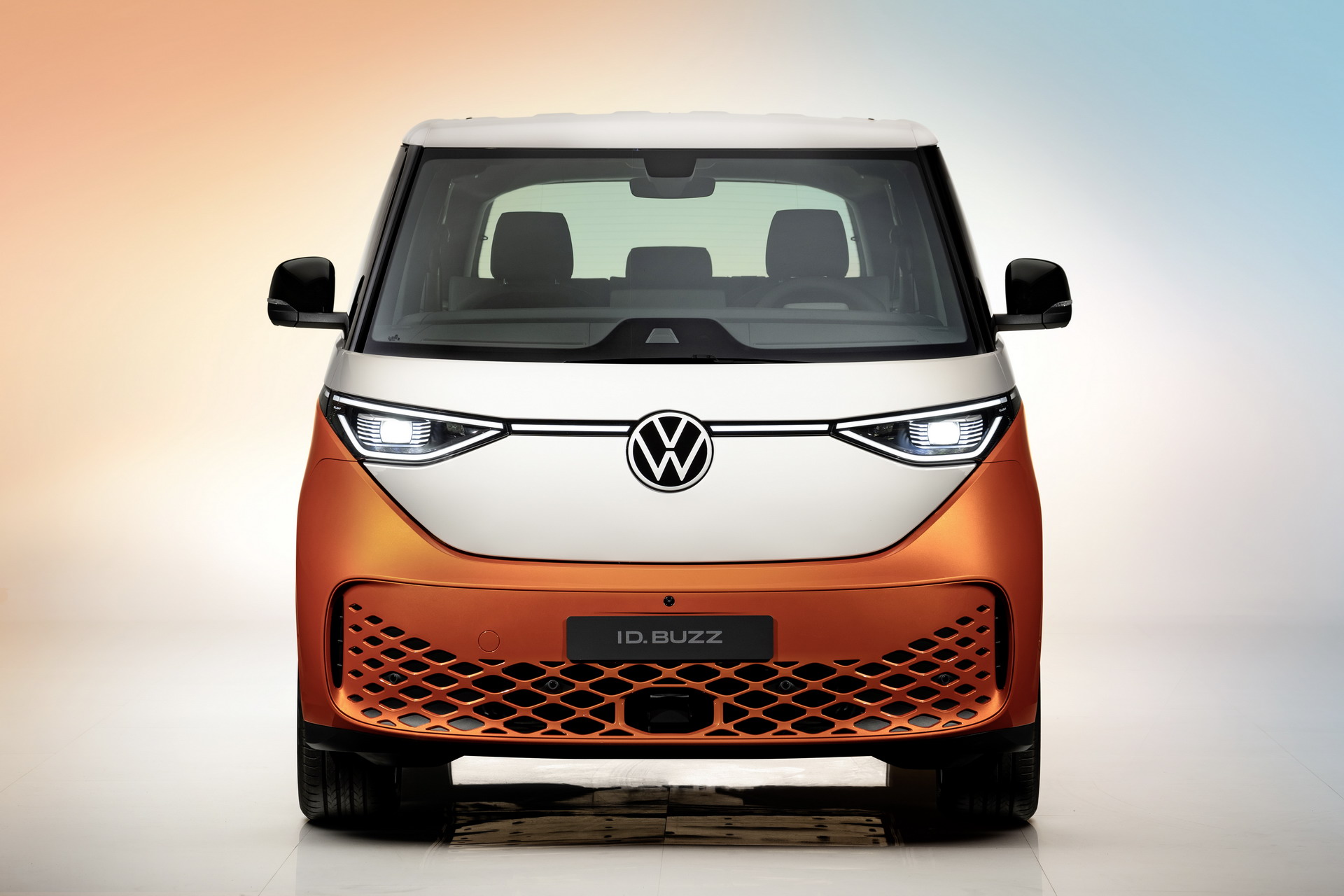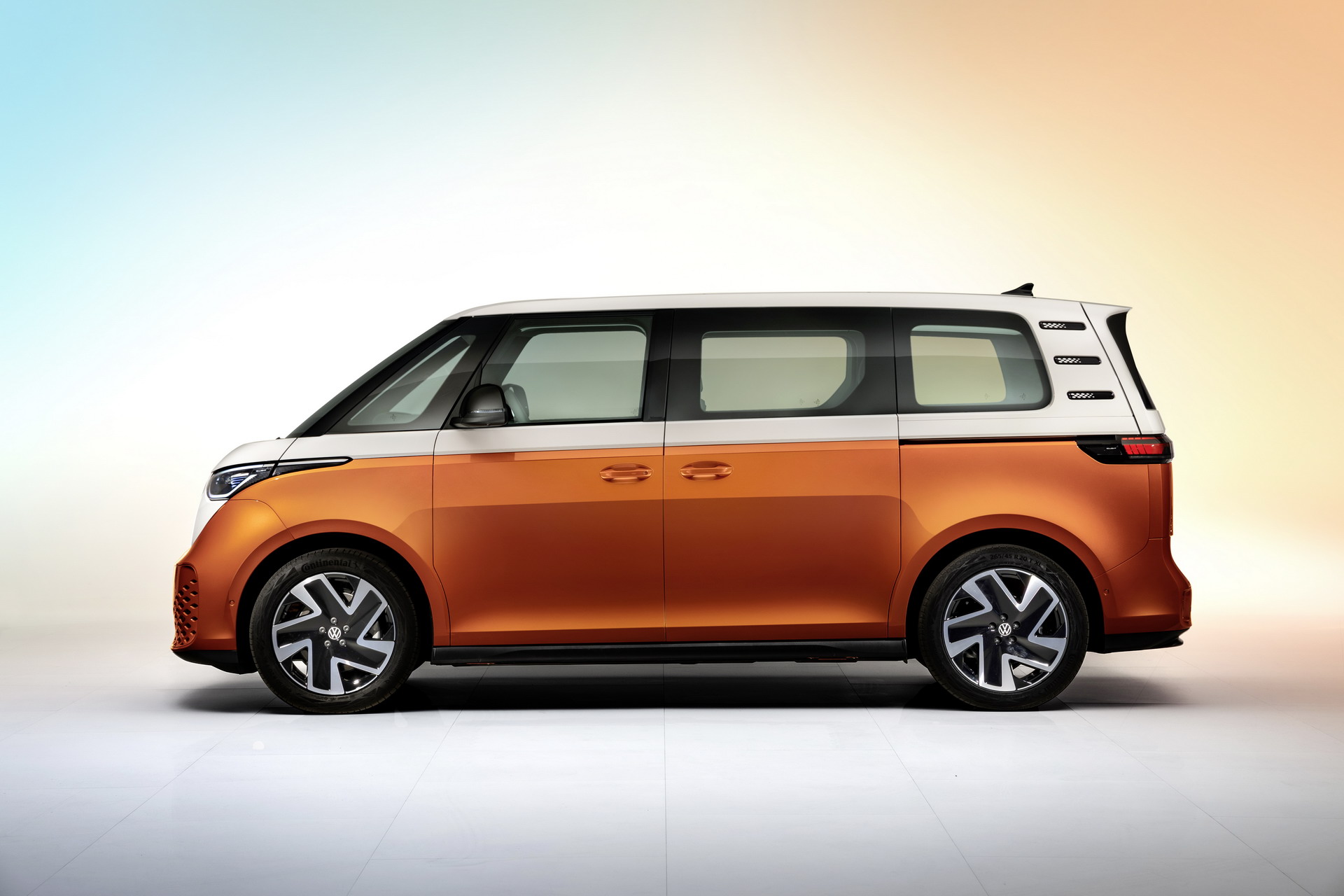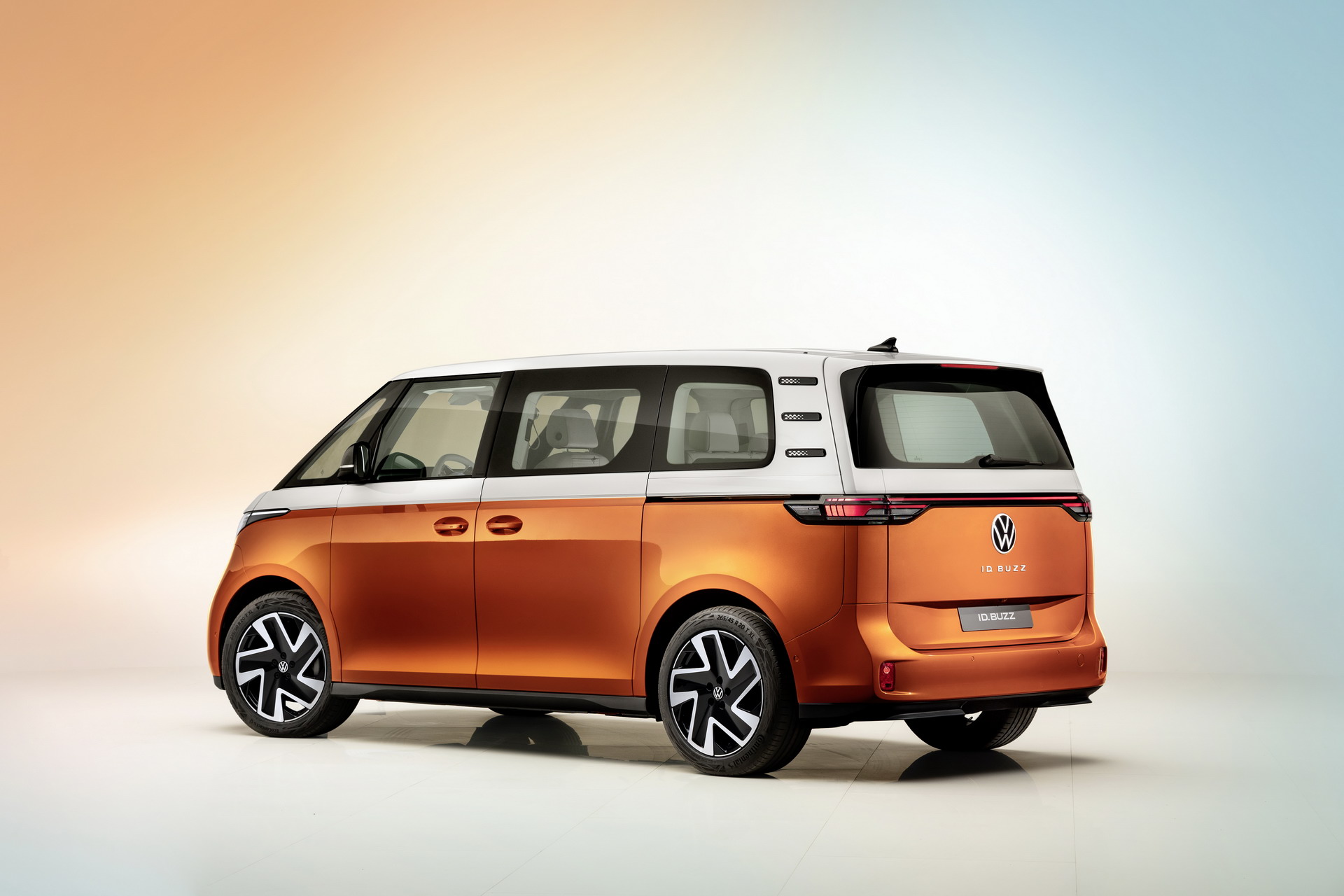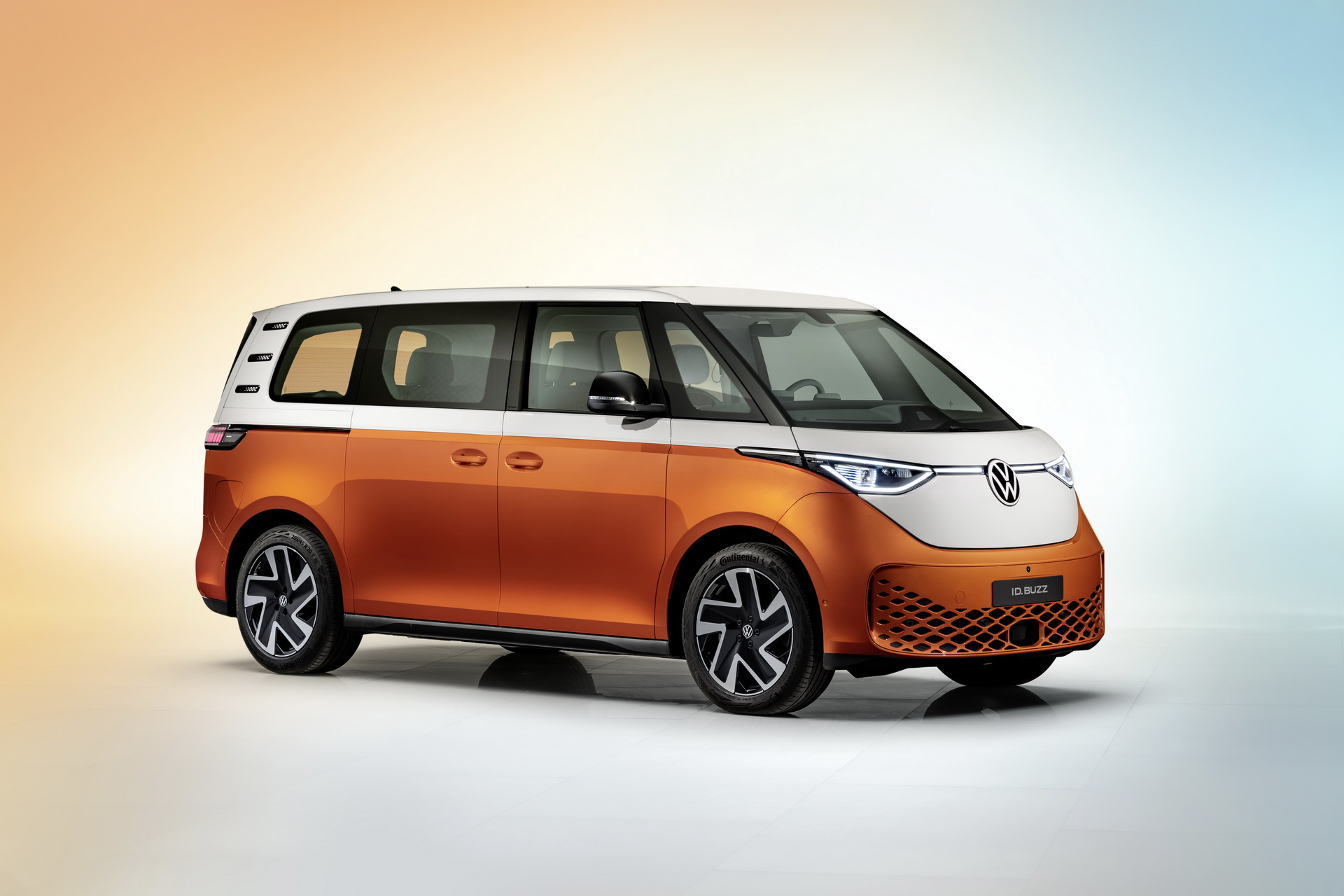The new ID. Buzz and ID. Buzz Cargo have been unveiled as stylish all-electric entrants into the people-mover and commercial space for Volkwagen. Described as “near-production” concepts, they’re built on VW’s modular MEB platform that underpins the rest of the ID. range.
The standard-wheelbase model unveiled today will go on sale in Europe in the third quarter of this year, with an 82 kWh battery and five seats for the passenger version, while the ID. Buzz Cargo boasts the same specs in a more utilitarian electric panel van package.
U.S. customers will have to wait until 2024 for their version of the ID. Buzz, which will be offered solely in an extended-wheelbase trim that will be introduced next year. There are no plans to sell the cargo variant in North America.
Short Wheel Base And Cargo Versions At Launch
The ID. Buzz will be initially offered in Europe with a five-seat configuration (two rows). VW says that a six-seater (housing three rows of two seats) on the standard wheelbase is slated for release at a later date. The extended wheelbase version will land in Europe next year and will be offered as a seven-seater, with a 2/3/2 configuration. The Cargo variant is offered with either a driver’s seat and two-seat passenger bench upfront, or two individual seats.
Both the ID. Buzz and the ID Buzz Cargo measure 1,985 mm (78.2 in) wide, and 4,712mm (185.5 in) long — about 192 mm (7.6 in) shorter than VW’s T6.1 van. Both the ID. Buzz and the T6.1 share the same wheelbase of 2,988 mm (118 in) too. The ID. Buzz’s height is 1937 mm (76.3 in) for the passenger version and 1mm taller for the cargo variant due to differences in chassis.
One Battery Option For Now But A Wider Range To Follow
Volkswagen hasn’t revealed an estimated driving range as yet, but they have stated the launch-model ID. Buzz will feature an 82 kWh battery (77 kWh net) for the initial European launch. It’ll provide power to a 201 hp (150 kW) electric motor with 229 lb-ft (310 Nm) of torque. The motor is connected to the rear axle, making the launch ID. Buzz rear-wheel drive. A greater range of battery options with differing power outputs will be made available next year, but VW hasn’t yet revealed any specifics of what to expect. However, for now, speed demons may have to apply elsewhere, as the ID. Buzz is only good for a top speed of 90 mph (145 km/h), while there’s no mention of zero-60 times.
European models will be able to take advantage of “bi-directional charging” a feature that will help the ID. Buzz feed the grid by stabilizing power, although this will require the installation of a DC bi-directional wall box. When it comes to conventionally recharging the electric van, the ID. Buzz can handle AC power at 11 kW, or DC fast charging at 170 kW, enabling a 5 percent to 80 percent recharge in 30 minutes.
Read: US Gets A Look At The ID Buzz Later This Month
When it goes on sale, the new van will also take advantage of VW’s “Plug & Charge” system, which aims to do away with the hassle of entering payment information or requiring users to carry around charge cards. With Plug & Charge the ID. Buzz can be plugged into a compatible quick charge station, where all authentication and identification material will be directly exchanged between the plug point and the van. Billing is by the ‘We Charge’ contract with Volkswagen. and is said to take seconds, with multiple service providers already signed up.
T1 Callbacks For A Retro-Modern Feel
The ID. Buzz is keen to trade on Volkswagen’s T1 Microbus heritage, with short overhangs front and rear and retro-inspired design elements. The large VW logo, stacked rear lights, and wide V-shaped bonnet do their best to evoke memories of the iconic predecessor, although the lower latticed grille and optional dynamic “IQ. Light” LED Matrix lights frame a future-forward design.
“We very consciously ensured that we were not making another T1,” says Jozef Kabaň, Head of Volkswagen Design. “The ID. Buzz shows that it is successfully transferring the genes and stylistic elements of that iconic vehicle into the digital era.”
Related: This VW Bus Is More Expensive Than Any New VW In The US
The ID.Buzz features bright two-tone paint options, although range of single colors are also available. The spectrum consists of a total of eleven color variants:
seven single-color options—‘Candy White,’ ‘Mono Silver,’ ‘Lime Yellow,’ ‘Starlight Blue,’ ‘Energetic Orange,’ ‘Bay Leaf Green,’ and ‘Deep Black’—and four two-tone options. The upper section of two-tone ID. Buzz models, which includes the roof and hood, is always finished in Candy White, while the lower area can be ‘Lime Yellow,’ ‘Starlight Blue,’ ‘Energetic Orange,’ or ‘Bay Leaf Green.’
Higher spec passenger versions of the ID.Buzz will ride on aluminum alloy wheels in a range of 18–21 inches, although base passenger and Cargo variants will sport steel 18-inch rims.
Interior Is A Colorful, If Yet Rather Simple, Place To Be In
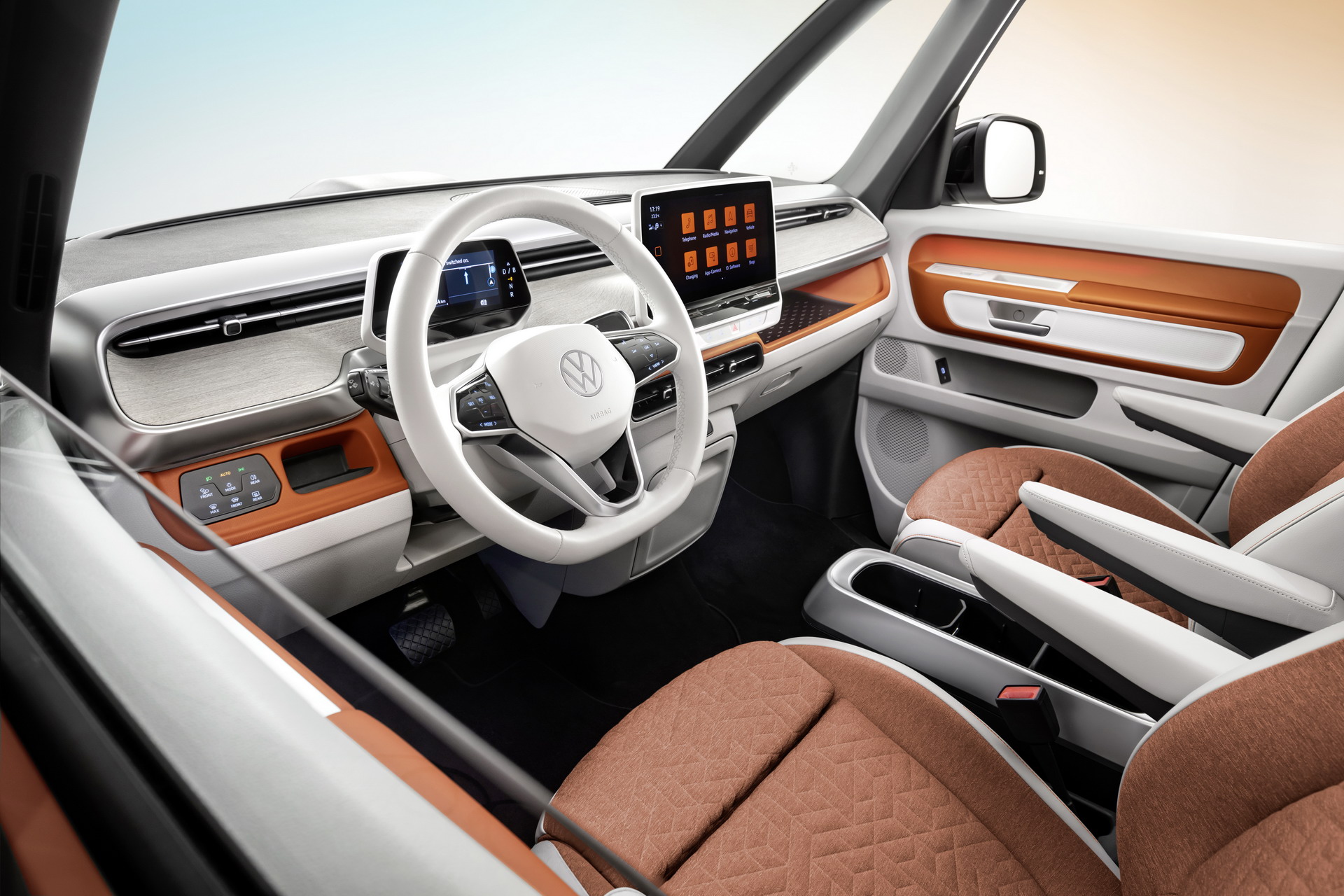
The ID. Buzz passenger edition’s cabin pictured above is more colorful than more utilitarian and sober interior of the Cargo model below
The interior of the VW ID. Buzz is going vegan, with leather replaced by synthetics, and a portion of the insides are derived from recycled materials. The steering wheel is covered in polyurethane that is said to look and feel like leather, while the materials used for the seat covers, floor coverings, and roof liner incorporate s Seaqual yarn, which is made up of 10 percent collected ocean plastic and 90 percent recycled PET bottles.
The cockpit features a 10-inch Digital display paired with a 10-inch infotainment system that can be replaced with an optional 12-inch unit. Potentially infuriating to some users, touch sliders and buttons are used to operate the HVAC controls. In happier news, wireless charging (with wireless App-connect) comes as standard. Depending on specification, the cabin features multiple USB-C ports, including a handy outlet up near the central rearview mirror to power a dashcam.
The highest trim levels will feature electrically adjustable seats with memory and massage functions. With the extended wheelbase — the vehicle that the North American model will be based on — a seven-seat configuration will also be available in a 2/3/2 arrangement.
As is the trend with car manufacturers these days, there are several easter eggs dotted around the cabin too. These include the vehicle’s silhouette embossed in the lower side seat trim and the fold-down tables located in the backs of the front seats.
Practicality Remains A Priority
Being an MPV, there’s naturally been attention shown towards practicality too. The rear features an upward-opening hatch, and both sides of the passenger version include sliding doors. The rear three-person bench can be split 40:60 and be slid fore and aft to increase rear luggage space, which stands at 1,121 liters (39.6 cu ft).
There’s also an optional removable center console that has been developed by Volkswagen Commercial Vehicles, but is available across the passenger and cargo versions. This multifunctional box features storage bins (in the case of the
Cargo, a cup holder,), a 1.4-liter flip-lid compartment for a water bottle, and a 5-liter drawer to accommodate tablets or laptops. In the two-seat Cargo and five-seat ID. Buzz, the center console is latched in place between the driver’s seat and the front passenger seat. On the six-seat ID. Buzz, the box can also be placed in the middle of the second seating row.
ID. Buzz Cargo Is Pure No-Nonsense Panel Van
While passenger version of the ID. Buzz sports bright colors and interiors, the Cargo Variant takes a more serious approach. Available with either a three-seat (one driver’s seat and a twin-seat passenger bench) or with two individual seats, the Cargo features a partition separating the load area from the driver’s compartment.
This partition will be optionally available with a window and an opening for loading items. The loadspace itself features lashing rings and bars on the side walls to ensure cargo can be secured properly, while the van ditches the second sliding door. However, if needed, the panel van can be configured with a second sliding door as a custom option.
European Customers Get Behind The Wheel Later This Year
The ID. Buzz will be produced by Volkswagen Commercial Vehicles at its main plant in Hannover. Production of both the ID. Buzz and ID. Buzz Cargo will begin in the first half of 2022. Pricing is expected to be announced in the coming weeks.
European order books will open in May 2022, with the launch slated for the third quarter of the year. Meanwhile, North American customers can expect to see the debut of the passenger long-wheelbase ID. Buzz sometime next year, with sales only opening up in 2024.




